If you want a simple, thorough roadmap for how to start a blog…
…and you’re tired of wading through 20,000-word “ultimate guides” packed with filler and fluff…
You’ve come to the right place.
With over 4 million readers, we’re one of the world’s biggest websites about writing and blogging. We’ve helped thousands of people start a blog, improve their writing skills, and earn real, tangible income online. And today, we’re going to help you.
In this easy-to-digest post:
We’ll walk you through the step-by-step process for starting a blog, answer some common blogging questions, and show you free tools and resources that’ll put you on the path to success.
You’ll follow the simple steps, create your own blog, and start padding your wallet with tens and twenties.
Sound good?
Let’s dive right in.
Table of Contents
1. Pick the Right Blog Topic

“What are the most popular blog topics?” “How do I come up with a blog idea?” “What should I blog about?” “How to choose blog topics?” “What if I don’t know what to blog about?” “How do you start a blog?”
We get questions like these a lot, and they usually come from people at their wit’s end.
Want to know the big problem with blogging?
Most people don’t know there’s a huge chance of failure, so they spend months or even years creating a blog with zero chance of succeeding.
Eventually, they give up and start over, but again, they invest months or even years into creating a second (or third or fourth) blog that doesn’t work.
The reason?
It’s not because they’re dumb. And it’s not because they’re lazy.
It’s because they’re choosing the wrong blog topic.
Granted, if you’re starting a personal blog, the rules are different. Do you enjoy the topic? Is it fun? Those are the only two questions that should matter to you.
But if you’re looking to start a blog that will bring in traffic…
If you want to create a blog that will generate passive income…
You need to choose a viable blog topic that has a fighting chance to succeed. Because here’s the part that’s tough to swallow:
All blog topics aren’t viable. Some will fail no matter how good you are or how hard you work.
That’s the bad news.
The good news is we’re going to show you how to pick a winner.
And it’s a lot simpler than you’d think.
How to Choose a Winning Blog Topic
Jot down a list of topics that interest you.
These could be your hobbies, topics you suspect are highly profitable, or something random you read in a magazine while waiting to see the dentist.
To be a viable blog topic, you need to be able to answer “yes” to these five questions:
- Do any existing blogs on this topic have a Facebook page with more than 10k fans?
- Do any blogs on this topic have more than 50k followers on Twitter?
- Does Amazon have any books with more than 30 reviews on this topic?
- When you search for words and phrases related to this topic, are there any Google ads?
- Do any words or phrases related to this topic have more than 100k searches in Google’s Keyword Planner tool?
These questions will let you know whether or not there’s an existing audience for your topic.
Here’s why this is important:
Too many bloggers try to be cute. They hunt for an audience no one else is serving. They think, “if there’s no competition for this topic, creating a successful blog will be easy!”
Wrong.
If there are no competitors, who will link to you? Where will your audience come from? How the heck will anyone find you?
It’s counterintuitive, but the more competition there is in a blogging space, the easier it is for a new blogger to find success in that space.
So, don’t try to be unique. Don’t try to be too clever.
Pick a blog niche that has an existing audience and popular blogs already vying for the audience’s attention.
2. Choose the Right Blogging Platform

We’ll keep this section brief:
There are several free blogging platforms out there, and for what they are, and what they do, they offer solid value.
In fact, we’re big proponents of bloggers starting with a free blog at Medium.com so they can test their content ideas and make sure they’re viable before creating a full-fledged blog.
But once you’re ready to build an audience and make money online, there’s only one blogging platform you should consider (and no, it isn’t Tumblr, Blogspot, Squarespace, or Wix):
It’s WordPress.
Or, more specifically, self-hosted WordPress.
As of this writing, 37.5% of all websites use WordPress — including heavyweights like TechCrunch, the Star Wars blog, Mercedes-Benz, and, yes, Smart Blogger.
With virtually unlimited plugins you can install, customizations you can make, and designs you can implement, a self-hosted WordPress blog offers flexibility that free platforms can’t match.
Yes, WordPress is technically free too. It’s open-source. However, as we explain in the article linked above:
Because it’s self-hosted, you have to purchase a hosting plan so you can install WordPress on your own web host. That costs money (unless you choose free hosting — more on that later). You also have to purchase your own domain name, which we’ll discuss in a moment.
But don’t let these relatively minor expenses deter you.
If you’re serious about blogging, building an audience, and monetizing your blog content, you need to set up your blog on a rock-solid foundation.
You need WordPress.
3. Choose a Domain Name

Put yourselves in the shoes of a visitor.
You’re browsing the world wide web, and you see a headline for a blog post that catches your attention. Maybe a friend on social media shared it with you, maybe it came up on a Google search, or maybe it’s just a link in another article you’re reading.
Regardless, you click the link and, consciously or not, you’re asking yourself a single question as you browse through it…
“Is this for me?“
Within a few seconds, you have to decide whether to keep reading the post or move on to something else, and the only way you’ll stay is if it’s relevant to you.
And not just the post, either. When you’re deciding, you’ll take in the design of the web page, other posts’ headlines, and, yes, the domain name.
For example, consider Entrepreneur.com. Is there any doubt about who the site is for? Entrepreneurs, of course!
How about BeABetterBlogger.com? Obviously, it’s for people who want to become better bloggers.
Neither names are clever, but they help you decide to stay or go by clearly articulating who they are helping. That’s what a good domain name does.
Of course, all the great domain names are taken, right?
Not necessarily.
How to Choose a Custom Domain Name for Your Blog
Here are three different methods for finding the perfect domain name:
- Name the audience. The simplest way to get a clear domain name is to call out the audience in the domain itself. (Examples: SmartBlogger.com, CouchPotato.com, AFineParent.com)
- Name the topic. If your blog focuses on a specific topic, try finding a domain name that describes it in clear, concise language. (Examples: ArtofManliness.com, BudgetsAreSexy.com, PaleoHacks.com)
- Name the benefit. Why should people stick around? If you have a good answer, sometimes you can turn it into a new domain name that really stands out. (Examples: BeABetterBlogger.com, MakeALivingWriting.com, BiggerPockets.com)
Our suggestion:
Use these three strategies to make a list of 10-20 domain names you’d be happy to have. You can write them out in a word processor or, if you want to get fancy, you can use a blog name generator tool like NameStation to produce a lot of ideas at once.
Once you’re finished brainstorming, head over to a domain registrar like Namecheap (affiliate link) to see if the domain names are available.
Namecheap’s Beast Mode will let you search for up to 5,000 domain names at one time. You can access it by clicking the “Use Beast Mode…” link at the top of the page, or by entering a keyword and clicking “Beast Mode” next to the search button:
Sometimes you get lucky, and one of your favorites is available. If not, you either have to head back to the drawing board for another brainstorming session, or you can go to a premium domain name marketplace like Sedo.
Either way, a few words of advice:
Don’t get hung up on your domain name. While it’s certainly helpful to have a good one, there are thousands of hugely popular sites with terrible domain names no one understands.
In other words, it’s not really a “make or break” factor for your site. Give yourself a few days or maybe a week to brainstorm ideas, and then make a decision.
4. Purchase a Web Hosting Plan

If you’re not familiar with the term, a “web host” is kind of like a warehouse for websites on the Internet.
You pay a small fee to keep your website on the Internet, handle all your visitors, back up your website, provide customer support, manage the security of your website, and so on.
In short:
Website hosting costs money, but you usually get a good bit for your money.
Editor’s Note: If you’re on a tight budget, check out 11 Free WordPress Hosting Services That Don’t Suck. None of the free options discussed will be able to stand toe to toe with premium web hosts, but if “cost” is your chief concern you’ll want to check it out.
There is a gazillion different WordPress hosts out there, but the hosting provider we recommend to our students is SiteGround (affiliate link).
SiteGround is like one of those hole-in-the-wall restaurants that’s both affordable and really freaking good, and it’s quite possibly the best web host out there for beginner bloggers.
Here are a few of our favorite features:
- A technical support team knowledgeable in WordPress
- A built-in Content Delivery Network (CDN) to speed up your site
- Free SSL certificates (so Google will know your site can be trusted)
- Daily backups (so you never lose your data)
And if you’re a new customer, SiteGround offers discounts of up to 62% for Smart Blogger readers (just click one of our SiteGround affiliate links).
How to Purchase Web Hosting at SiteGround
Go to SiteGround (affiliate link) and click the GET PLAN button underneath the managed WordPress hosting option that best fits your needs.
For beginners, we recommend the StartUp plan:
On the next screen, do the following:
- Click the I already have a Domain option
- Enter the domain name you purchased earlier from Namecheap (Example: kevinjduncan.com)
- Click the PROCEED button
On the final screen, you’ll complete four sections:
- Account Information (your email address and password)
- Client Information (your name, mailing address, and phone number)
- Payment Information (Visa, Mastercard, and Discover are accepted)
- Purchase Information (billing period, [optional] extra services)
Let’s look at Purchase Information in more detail:
If you choose a 12-month billing period with no extra services or add-ons, your 1-year total will be $83.88.
Decline the Extra Services, review your order, and click the PAY NOW button.
Congratulations! You’ve purchased SiteGround hosting.
Now it’s time to connect it to your Namecheap domain name…
How to Point Your Domain Name to Your Web Host
This next part is a little technical, but we’ll make it as simple and painless as possible.
To connect your Namecheap domain name with your SiteGround hosting account, follow these steps:
- Sign into your Namecheap account.
- Click Domain List on the left-hand sidebar and select MANAGE next to your domain (if you just purchased the domain name, you can also select it from your account’s main Dashboard).
- In the Nameservers section, choose Custom DNS from the drop-down menu.
- Enter your SiteGround name servers. To find them, log into your SiteGround account, click the Go to cPanel button, and copy the Name Servers listed in the ACCOUNT INFORMATION section. This tells Namecheap you’re the rightful blog owner.
- Save your changes in Namecheap by clicking the green checkmark.
That’s it.
If you need a handy visual, here’s a short YouTube video tutorial that’ll walk you through the process:
5. Install WordPress

With your new domain and web host connected, it’s time to set up WordPress.
But don’t worry. Installing WordPress isn’t complicated.
In fact, many premium WordPress hosts (like SiteGround) make the process ridiculously easy — no cPanel or localhost know-how is required.
If you chose a different website builder, we’ll go over their steps for installing WordPress in a moment.
But first, let’s quickly walk through SiteGround.
After logging into your SiteGround user panel for the first time, the Account Setup Wizard will appear as a pop-up window:
As shown in the screenshot above, click the Start a new website option and select WordPress as the software you want to install.
Next, you’ll create the login details for your WordPress website account:
Enter your preferred email address, a good username, and a strong password.
Click the Confirm button to continue.
Finally, after reading the SiteGround Terms of Service, you’ll click the Complete Setup button.
And that’s all there is to it.
SiteGround will now install WordPress for you. In just a few short minutes, you’ll be ready to log into your WordPress Dashboard.
How to Log Into the WordPress Dashboard
In your favorite web browser, go to your WordPress login URL by appending /wp-admin (or /admin or /login or /wp-login) to the end of your domain name.
Examples:
- yourdomain.com/wp-admin
- www.yourdomain.com/admin
- yourdomain.com/login
- www.yourdomain.com/wp-login
You’ll be taken to your WordPress login page:
Enter the username and password you created earlier.
Click Log In.
Your WordPress dashboard will look similar to this:
Now for the fun part. Let’s begin customizing your WordPress site.
We’ll start by giving it a new coat of paint.
6. Design Your Blog by Choosing a WordPress Theme

Before we begin customizing your WordPress site with themes or templates, we need to be clear about something:
Your content matters more than anything else.
You can have a site that’s ugly, clunky, and slow, but if you have great content, you can still get traffic and earn passive income.
Not the opposite, though. You can have the most beautiful, user-friendly website online, but if the content sucks, nobody will care about you.
So, don’t allow yourself to get lost in these details. Focus on making your website functional, and then you can always come back and make it unique or beautiful later.
Make sense? Good.
Now, let’s go over how you can find a great design for your website:
How to Choose a WordPress Theme
In WordPress, your “theme” is the design of your website. It dictates how your blog looks to the world.
There are tens of thousands of elegant theme options out there for you to choose from — some free, some that cost money.
You might think having so many options is a good thing, but it’s actually the opposite. In his book, The Paradox of Choice (affiliate link), psychologist Barry Schwartz says having too many choices can lead to decision-making paralysis.
In other words…
The more options you have available, the more likely you are to choose none of the options.
So, we’re going to keep this very simple:
- If you want a free WordPress theme, choose Astra (affiliate link)
- If you want a premium blog theme, choose Astra Pro (affiliate link)
- And if you want an advanced page builder that’ll let you customize your design to your heart’s content, choose Elementor Pro (affiliate link)
Pick the WordPress theme that best fits your situation and needs.
Download it.
Now, let’s install it.
How to Install WordPress Themes
To install a WordPress theme, follow these steps:
- In the left-hand navigation pane, go to Appearance
- Choose Themes
- Click the Add New button
From here, there are two paths you can take:
- Search themes… from WordPress.org’s huge directory of free WordPress themes, or
- Click the Upload Theme button to install a WordPress theme you downloaded from a third party (like Astra or another Elementor theme).
Let’s walk through both paths:
Path #1: Install a New Theme From WordPress.org’s Directory
If you want to install a free theme from WordPress.org:
- Enter a theme name or a desired feature (Example: “minimalist”) in the Search themes… field
- Click the Install button
Path #2: Install a Thirty-Party WordPress Theme
If you want to install a WordPress theme you downloaded from a third party, click the Upload Theme button and:
- Click the Choose File button
- Find the third-party theme you downloaded to your computer (Example: premium-theme.zip) and select it
- Click the Install Now button
Whether you choose a free theme or a premium theme, you’ll “activate” it the same way.
We’ll show you how to do that next:
How to Activate a WordPress Theme
Immediately after installing your WordPress theme, you’ll be given the option to “Activate” or “Preview” it.
If you want to immediately publish the theme to your website, click the Activate button. Otherwise:
- In the left-hand navigation pane, go to Appearance
- Choose Themes
You’ll then see every theme you’ve installed, including the “default” themes that are installed automatically by WordPress.
Find the theme you want to use and click the Activate button:
And that’s it.
Your fancy new blog design is now visible to the world!
But is your blog ready for the world? Not yet.
First, we need to improve its functionality. And we’ll start by installing a few WordPress plugins.
7. Install WordPress Plugins

WordPress is packed with features. Plugins add even more.
From the 50,000+ free or freemium plugins in the WordPress.org repository to the thousands of premium plugins available from third parties, there is a WordPress plugin for virtually everything.
With so many options available, and with so many articles littered across the web touting “must-have” and “essential” WordPress plugins, most beginner bloggers go overboard. They install so many plugins, their sites slow to a crawl.
Here’s the thing:
There are specific categories or types of WordPress plugins you absolutely need; however, there’s no such thing as an essential plugin.
Anyone who tells you otherwise is giving bad information.
In this next section, we’re going to go over the six categories of WordPress plugins you need to install. And yes, we’ll have a plugin recommendation for each category.
But if you don’t like one of our recommendations, that’s okay. Simply find a different plugin that offers similar functionality.
The 6 Types of WordPress Plugins You Need to Install (+ Recommendations)
- Performance Plugins (Our Pick: WP Super Cache)
- Security Plugins (Our Pick: iThemes Security)
- Backup Plugins (Our Pick: UpdraftPlus)
- SEO Plugins (Our Pick: Yoast SEO)
- Social Sharing Plugins (Our Pick: Social Warfare)
- Email List Building Plugins (Our Pick: Convert Pro)
1. Performance Plugins (Our Pick: WP Super Cache)
Why you need a performance plugin: If your blog is slow, your readers will bounce and Google will rank you lower in search engine results. A good performance optimization plugin will “cache” your content so it loads faster.
Why we recommend WP Super Cache: W3 Total Cache is another good option, but we prefer WP Super Cache for its simplicity. The fact it’s maintained by the company behind WordPress, Automattic, doesn’t hurt.
What’s the cost? It’s free.
Note: If you go with SiteGround (affiliate link) as your web host, as we recommended earlier, you won’t need to install a performance plugin like WP Super Cache. SiteGround has its own caching plugin, and it only takes about a minute to set up.
2. Security Plugins (Our Pick: iThemes Security)
Why you need a security plugin: On average, around 30,000 websites are hacked each day. If your idea of securing your blog is simply having a good password, you’re asking for trouble.
Why we recommend iThemes Security: Formerly known as Better WP Security, iThemes Security offers a one-click setup wizard that makes protecting your site easy.
What’s the cost? iThemes Security is free, but they also offer a pro version with extra features.
3. Backup Plugins (Our Pick: UpdraftPlus)
Why you need a backup plugin: Because smart bloggers are always prepared.
Why we recommend UpdraftPlus: It strikes a good balance between flexibility, features, and ease of use. It has a 4.8 out of 5.0 rating on the WordPress plugin repository, and it’s actively updated by its developers.
What’s the cost? UpdraftPlus is free, but they also offer a premium version for $70. Here’s a breakdown of what you get with each plan:
4. SEO Plugins (Our Pick: Yoast SEO)
Why you need a SEO plugin: If you want website traffic, you need Google to love your content. By using a good SEO plugin, you can make sure your blog posts are putting their best foot forward.
Why we recommend Yoast SEO: It’s the gold standard of WordPress SEO plugins.
What’s the cost? Yoast SEO has both free and premium versions. Its free version offers everything you need.
5. Social Sharing Plugins (Our Pick: Social Warfare)
Why you need a social sharing plugin: By making it easy for your existing readers to share your posts on their favorite social media sites, social sharing buttons help get more eyes on your quality content.
Why we recommend Social Warfare (affiliate link): There are a lot of social media plugins out there, but we like Social Warfare because it’s lightweight (e.g. doesn’t slow down your website) and offers unique features like “Click to Tweet” boxes and Pinterest-specific images and infographics.
What’s the cost? Social Warfare has both a free and pro version. Its free version offers all the basics you’ll need, but if you decide to upgrade the pro version is only $29 (paid annually).
6. Email List Building Plugins (Our Pick: Convert Pro)
Why you need an email list-building plugin: If you want your blog and business to grow, turning blog traffic into leads is a must. You need a way to capture the email addresses of your readers so you can continue to engage with them.
Why we recommend Convert Pro (affiliate link): Its drag-and-drop editor for creating pop-ups is the most user-friendly option we’ve used.
What’s the cost? Convert Pro isn’t free. It costs $99 annually or $399 for a lifetime license. If cost is a concern, consider the free version of Sumo, which has some great features, but includes company branding.
How to Install WordPress Plugins
Now that we’ve gone over the types of plugins you need, let’s walk through the steps for installing them.
It’s really simple:
- In the left-hand navigation pane inside your dashboard, go to Plugins
- Choose Add New
You then have two paths you can take:
- Click the Upload Plugin button (if you downloaded a third-party plugin like Convert Pro), or
- Enter the name of the plugin in the Search plugins… field (if you want to find a free plugin from the WordPress.org repository)
Let’s quickly go over both paths:
Path #1: Install a Thirty-Party WordPress Plugin
If you want to install a WordPress plugin you downloaded from a third-party website, click the Upload Plugin button and:
- Click the Choose File button
- Find the third-party theme you downloaded to your computer (Example: convert-pro.zip) and select it
- Click the Install Now button
Path #2: Install a Plugin From WordPress.org’s Directory
If you want to install a plugin from WordPress.org:
- Enter the plugin name (Example: “wp super cache”) in the Search plugins… field
- Click the Install button
Told you it was simple.
Of course, just like when we installed a WordPress theme, there’s one more step to take to “activate” your plugin.
Let’s go over that next:
How to Activate a WordPress Plugin
Whether you choose a free plugin from WordPress.org or a premium plugin from a third-party website builder, you’ll turn it on the same way.
You can click the Activate button that appears immediately after you install it:
Or:
- In the left-hand navigation pane, go to Plugins
- Choose Installed Plugins
- Find your plugin and click Activate
Done.
8. Blog Set Up and SEO (Search Engine Optimization)

Volumes have been written about on-page SEO, off-page SEO, Google RankBrain, keyword research, SEO tools, search intent, Google Analytics, and all the other intricacies surrounding the ins and outs of getting ranked higher in SERPs (search engine results pages).
We’re going to be straight with you:
If you want to start a blog that brings in traffic, if you want to catapult your content to page one of Google, you’re going to have to roll up your sleeves and learn SEO.
We’ll give you some great reading material in a moment. But first, let’s cover the SEO basics you need to know when doing a new blog setup — the kind of SEO basics often missed in advanced tutorials.
We’ll start with the easiest one.
Make Sure Google Can Find Your Website
To ensure search engines like Google and Bing can find your blog, you need to make sure the following are unchecked:
- In the left-hand navigation pane of your WordPress dashboard, hover over Settings
- Click Reading
- Confirm “Discourage search engines from indexing this site” is unchecked
Create an XML Sitemap (and Submit Your Sitemap to Search Engines)
First, a quick definition from Google:
What is a sitemap?
When your blog is new and has few external links pointing to it, a sitemap helps ensure Google is able to discover the amazing new content you create.
So, let’s go over how you create a sitemap (and how you can let Google know it exists).
How to Create an XML Sitemap
If you installed and activated the Yoast SEO plugin we recommended earlier, creating a sitemap is a snap.
- In the left-hand navigation pane of your WordPress dashboard, hover over SEO
- Click General
- Click the Features tab
- Scroll down to the XML sitemaps option and make sure the switch is toggled to On
You now have an XML sitemap for your blog. Next, we need to give it to Google, Bing, and other search engines.
So before we leave the Yoast SEO plugin, let’s copy the URL of your sitemap:
- Click the question mark icon next to XML sitemaps
- Click the See the XML sitemap link
Your sitemap will open in a new tab in your browser.
Copy the URL in the address bar and save it.
How to Submit Your Sitemap to Search Engines
The steps for submitting your sitemap differ from search engine to search engine. We’ll quickly go over the most popular ones, starting with Google:
Submit Your Sitemap to Google Search Console
- Go to Google Search Console and sign in using your Google account
- In the left-hand pane, select your website
Note: If you haven’t yet added your website to Google Search Console, you’ll need to click “Add property” and follow the steps provided before continuing below.
- Under Index, click the Sitemaps option
- In the Add a new sitemap section, enter the URL you saved earlier and click Submit
Submit your Sitemap to Bing Webmaster Tools
- Log into Bing Webmaster Tools (you’ll need to create an account if you have not yet done so)
- Under the My Sites section, click your website
Note: If you haven’t yet added your website to Bing Webmaster Tools, enter your blog’s URL in the Add a Site section and click the ADD button.
- In the left-hand pane, click Configure My Site and choose Sitemaps
- Enter the URL of your sitemap in the Submit a sitemap section and click the Submit button
And that’s it.
You’ve successfully submitted your sitemap to Google and Bing.
Change Permalinks Structure
By default, WordPress sets the links on your blog to the following format:
- yourdomain.com/?p=123
Why do they do this? No one knows for sure. “For grins and giggles” is the theory we’re going with.
But regardless of the reason, you need to update this link structure before you publish a single piece of content.
Here’s how you do it:
- In the left-hand navigation pane, hover over Settings
- Click Permalinks
- Under Common Settings, set the option to Post name
Now your links will look like this:
- yourdomain.com/how-to-brew-coffee
- www.yourdomain.com/seo-tips
- yourdomain.com/social-media-strategies
- subdomain.yourdomain.com/how-to-start-a-blog
Not only is this link structure better for your readers, but it’s better for search engines like Google too.
Install an SSL Certificate (So Your URL Begins With https Instead of http)
Speaking of things Google likes…
You absolutely, positively must install an SSL certificate for your website. Here’s why:
- Readers will know your website is safe
- Your website will be safe thanks to the encryption of readers’ sensitive data and personal info
- Google sees it as a ranking signal, which means not having an SSL certificate will hurt your content’s rankings in search results
Okay, so what is an SSL certificate? How do you know if a website has one or not?
Look for a secure padlock and https in a website’s URL:
If the URL has them, the website is secure. If it doesn’t, it isn’t.
How to Install an SSL Certificate
Your web hosting package from SiteGround (affiliate link) includes free SSL certificates from Let’s Encrypt.
Here’s how you install them:
- Log into your SiteGround account
- Click the Go to cPanel button
- In the Security section, click Let’s Encrypt
- Select your domain name, choose the Let’s Encrypt SSL option, and click the Install button
A few moments later, your SSL certificate will be up and running!
If you need more guidance, check out SiteGround’s Let’s Encrypt tutorial.
9. Write Your First Blog Post!

Can we be honest for a minute?
This is the fun part… content creation!
It’s time to start writing blog posts. Taking ideas in your head, turning them into words on the screen, and sharing them with the world.
Let’s walk through how you do it.
Up first, the basics:
- Add New Post in WordPress
- Blog Post Ideas
- Headlines
- Write an Introduction
- Write Faster
- Improve Writing Skills
How to Start a Blog Post in WordPress
- In the left-hand pane of your WordPress dashboard, hover over Posts
- Click Add New
If you’re using the new WordPress block editor (aka the Gutenberg editor), your screen will look like this:
If you’re using the classic TinyMCE content editor, you’ll see this:
Either way, you’ll be able to add a post title (aka headline), write your post, choose your category, tweak HTML and CSS, add free stock photos, and more.
- In the left-hand pane of your dashboard, go to Pages
- Click Add New
For detailed instructions on how to navigate the classic content editor, WordPress offers a detailed support article.
If you’re using the WordPress block editor, let’s go over the basic navigation so you’ll know how to get around.
Block Navigation in Gutenberg
- Add a new block
- Undo and Redo buttons
- Content structure (word count, headings, paragraphs, blocks)
- Block navigation (a drop-down displaying all the block types used in the post)
Next, the sidebar navigation:
Sidebar Navigation in Gutenberg
- Preview and Publish the post
- Categories, tags, permalink, and publishing options
- Block settings (unique options dependent on the type of block you’re using
- Hide the sidebar
- More editor settings
How to Add a Block in the Block Editor
Click the plus (+) sign in the top-left corner.
Choose the category and the type of block you want to add:
Each block can be edited, deleted, saved as reusable, and moved up or down with drag-and-drop options:
Don’t worry — WordPress blocks, widgets, and the like will get easier the more you use them.
Now let’s tackle the writing questions we hear most often from bloggers.
Question: “How Do I Find Good Blog Post Ideas?”
We typically recommend two methods:
1. Use BuzzSumo
BuzzSumo is a tool that lets you find popular posts on social media. If you need inspiration, what’s easier than browsing content that’s already doing well with your target audience?
2. Find the Thing That Keeps Your Readers Awake at Night
In other words:
What has your readers tossing and turning at two o’clock in the morning?
Are they wondering how to get more traffic to their blogs? Are they suffering from writer imposter syndrome? Or maybe they’re struggling with blog promotion?
Bloggers who are able to answer this burning issue, and who make a concerted effort to write about it and only it, have a leg up on the competition.
So, find your readers’ pain point. And then focus on helping them solve it.
Question: “How Do You Write a Good Headline?”
Copy the professionals.
Browse Smart Blogger and your other favorite, best blogs. Look for patterns. You should notice “list” and “how to” headlines are quite popular.
Here’s a recent example from Smart Blogger:
There’s a reason for this:
Decades of copywriting and advertising research have revealed certain types of headlines convert better than others.
Why mess with what works?
Question: “How Do I Write a Good Introduction?”
There are several good techniques for writing spellbinding introductions. Here are five of our favorites:
- Empathize with your reader
- Ask a tantalizing opening question
- Alternate between short and long paragraphs — give your writing a rhythm
- Use delayed transitions
- Use deliberate repetition of certain words to heighten their impact
Each of the above techniques draws the reader in and keeps them engaged. They’ll want to dive deeper into your post to find out what happens next.
Question: “How Can I Increase my Writing Speed?”
Eliminate as many distractions as possible.
This could mean turning off your smartphone, buying noise-canceling headphones, or even logging out of your email.
One unconventional trick is to turn off your grammar checker. Turn off Grammarly. Those squiggly red lines are your friends when you’re proofreading, but they’re your enemy when you’re trying to write faster.
Question: “How Can I Improve My Writing Skills?”
It’s cliche, but you have to practice.
When Brian Clark of Copyblogger took a young editor under his wing years ago, he made him write 100 headlines every single day. That editor, who coincidentally went on to launch one of the world’s biggest websites about blogging, got really good at writing headlines.
So, practice. Lots and lots of practice. And reading these resources will help too:
- 801+ Power Words That Pack a Punch and Convert like Crazy — Ever wish there was a shortcut to tap into your readers’ emotions? An easy way to make them feel exactly what you want? Well, there is. Power words.
- 583 Sensory Words to Take Your Writing from Bland to Brilliant — Are your words falling a little flat? Looking for ways to add a little punch and pizzazz to your writing? This massive, in-depth guide tackles a secret weapon used by literary greats, business owners, writers, and bloggers alike: sensory words.
- 298 Filler Words & Phrases That Rob Your Writing of Its Power — Ever worry that your writing lacks power? Did you know that certain filler words and phrases can weaken your writing without you realizing it?
- Writer’s Block: 27 Techniques to Overcome It Forever — How can you overcome writer’s block? Try these refreshingly original techniques to shake up your inner muse.
- Proofreading: 7 Editing Tips That’ll Make You a Better Writer — Ever wonder why your writing lacks the impact of your writing heroes? Find out the simple secret they don’t want you to know.
- 18 Writing Tips That’ll Actually Make You a Better Writer — Want a resource that summarizes our favorite writing tips? If you’re struggling with your writing skills, reading this post should be your first step.
10. Boost Your Traffic, Promote Your Blog, and Master Social Media

Let’s be honest:
When you’re a beginner blogger, no one is paying attention to you. You could write the most amazing piece of content the world has ever seen, and no one’s going to know it even exists.
Unless…
Unless you tell them about it.
You need to spend just as much time promoting your posts as you do writing them. At a minimum. Ideally, you’ll spend more time promoting them than writing them.
Here are some tips so you can get the most out of your promotional efforts:
Tip #1: Focus on One Social Media Platform
If you try to kick butt on every social media platform, you’re going to fail.
There are simply too many platforms out there, and there’s only so much time in the day. If you try to be everywhere, you’ll drown.

Here’s what you should do instead:
Pick one social media platform. Focus on it. Forget the others (for a long while, anyway).
Which platform depends on where your ideal readers hang out. For some niches, that’ll be Facebook. For others, it’ll be Twitter, Pinterest, or Instagram.
Find the best social network for your blog’s niche, join it, and dominate it.
Here’s how:
Learn How to do Pinterest (the Right Way)
Depending on your niche and audience, Pinterest can be a significant traffic source.
If your Pinterest game is lacking, check out 9 Ways to Go Viral on Pinterest and Get an Avalanche of Traffic and Pinterest Marketing: 7 Simple Steps That’ll Turn Pins Into Profits, and implement the tips we discuss.
Drive Traffic to Your Site (and Connect With Influencers) Using Twitter
Tweeting is easy.
Tweeting well, and harnessing the power of Twitter to drive traffic to your blog and connect with influencers, is difficult.
In The Definitive Guide to Twitter Marketing in 2024, we offer strategies to get Twitter traffic (and to get onto the radars of influencers).
If Twitter (X) is your social media platform of choice, be sure to read it.
Become a Facebook Kung-fu Master
Whether you love or loathe (or merely tolerate) Facebook, there’s no denying it is huge.
Facebook is so huge that, most likely, regardless of your niche, it’s where most of your readers hang out on social media.
If that’s the case, you need to master it.
These posts will help:
- How to Get 3,241 Facebook Fans per Day Without Paying for Ads (Incredible Case Study)
- How to Use Facebook Groups to Get More Traffic and Traction for Your Blog
- The Definitive Facebook Marketing Guide for 2024 (& Beyond)
- 12 Best Facebook Tools to Help Your Business Boom (2024)
Answer Questions on Quora
If you’re unfamiliar, Quora is a Q&A platform where anyone can post a question and get answers from experts in the community.
And it’s used by savvy bloggers (like our friends over at Ahrefs), to send traffic to their blog sites.
To learn more about Quora and how you can use it to boost your blog’s traffic, check out How to Turn Quora into a Traffic-Driving Machine for Your Blog.
Tip #2: Avoid These 4 Traffic Techniques That Are a Waste of Time for Beginners
Traffic strategies have been around for years. As a result, some of them are a bit long in the tooth.
Some of the following traffic techniques are dead (and have been for a while), while some can get you a little traffic but are too time-intensive.
Either way, when you’re a beginner, you should avoid these 4 traffic techniques:
1. Commenting on Popular Blogs
Once upon a time, this used to be effective, but as the blogosphere has grown, and popular blogs have received more and more comment spam, its return on investment has fallen dramatically.
Yes, blog commenting can open doors to a future relationship with the blogger, but if getting click-throughs to your blog is your primary goal, you’re going to be disappointed.
2. Submitting Your Site to Directories
Years ago, submitting your site to directories used to be a viable traffic resource and an essential part of SEO, but the benefits have disappeared.
Here’s what Google’s John Mueller had to say way back in 2017 when he was asked if submitting to directories had any SEO value:
In short, this marketing strategy has been dead for a long time.
3. Trying to go Viral on Reddit, Hacker News, etc.
While these sites can drive enormous traffic, it’s difficult to get your content to the front page until you have lots of readers to vote for it.
Cross this strategy off your list until you hit 1,000 email subscribers (at a minimum).
4. Paying for a Unique Design
You’d think paying for a unique blog design would help establish your legitimacy and lead to more traffic, but in reality, it doesn’t have any effect on traffic at all.
You’re far better off using a free or inexpensive WordPress theme like Astra (affiliate link), and investing the money elsewhere.
Tip #3: Make Powerful Friends by Reaching Out to Influencers
When you’re a beginner blogger, building an audience is difficult.
Want to know a shortcut?
Get someone influential to introduce you to their audience.
This introduction could come in the form of a backlink to your website, an email mention, a share on social media, or letting you write a guest post for them.
Here’s how you do it:
- Find the movers and shakers in your niche
- Get on their radars
- Reach out to them
It sounds easy, but there’s quite a bit of hard work involved. A lot, actually.
And here’s the kicker:
Every other beginner blogger will be doing outreach too. So will experienced bloggers. Even influential bloggers who blog full-time (including the ones you’re trying to connect with) will be doing it.
Every blogger who wants to grow their audience is pounding the pavement and reaching out to other bloggers (or paying someone to do it for them) in the hopes of making powerful friends.
In short, there’s a lot of competition. So if you want your outreach efforts to be effective, you need a solid plan.
Blogger Outreach: How to Get Influencers to Promote Your Content for Free is packed with proven outreach techniques.
Read it and follow it.
Tip #4: Pay for Facebook Ads
We hesitated even to include this section.
Here’s the thing:
When you’re starting out, you should not spend money on Facebook ads. Or Google ads. Or whatever LinkedIn is doing these days.
But once you have a solid foundation in place, once you’ve reached 1,000 email subscribers, and once you have traffic starting to roll in from Google search results… consider supercharging your efforts by learning the ins and outs of Facebook’s ad network.
Here’s a primer to get you started: How I Got 532 Subscribers in 43 Days Using Cheap Facebook Ads.
11. Build Your Email List (Get Started NOW!)

If you polled a hundred experienced bloggers who have been around the block or two, and you asked them about their biggest blogging mistake, you’d hear one answer more than any other:
“I wish I started building my email list sooner.”
Learn from their mistakes.
Start building your email list on day one.
Get started now.
We’ll walk you through the step-by-step process.
1. Pick an Email Marketing Service
There are a lot of good email marketing service providers…
- AWeber
- ConvertKit
- Keap
- Drip
…but when you’re starting out, you need to keep your expenses in check wherever you can. That’s why we recommend MailerLite (affiliate link) to our students, which is free for users with 1,000 or fewer subscribers.
Once you hit the magic 1k number, you can either upgrade to one of MailerLite’s paid plans or switch to a different email marketing service provider.
So, don’t overthink it. You need an email marketing provider to start building your email list. Get a solid one that won’t cost you any money.
2. Strategically Place Optin Forms on Your Blog
Using an email list plugin like Convert Pro (affiliate link) or Sumo, place opt-in forms throughout your website:
In Your Header
Inside Your Content
On a Landing Page
In Pop-Ups
In Your Sidebar
On Your Homepage, “About” Page, or Contact Form Page
3. Give People a Reason to Give You Their Email Address by Offering an Ethical Bribe (aka Subscriber Bribe)
Even if they like you, most people won’t give you their email address out of the goodness of their heart.
No, you need to give them a reason.
Ethical bribes (also known as subscriber bribes, lead magnets, opt-in bribes, free offers, free gifts, and content upgrades) give readers a reason to hand over their email addresses to you.
They give you their email, and you give them a free gift.
That’s all there is to it.
The trap many bloggers fall into is they try to get too big and creative with their lead magnet. As a result, they often fail to create one at all.
The lesson?
Keep your subscriber bribe simple. Our recommendation:
Start with a simple, one-page PDF checklist.
If you doubt a highly-focused, one-page download can be useful and appealing to readers, check out the following examples:
- Ramit Sethi of I Will Teach You To Be Rich once offered a downloadable PDF (“20 Questions Your Financially Unprepared Friends are Afraid Of”) as a lead magnet, which was essentially a single page of useful questions.
- MeetEdgar’s Laura Roeder (formerly of LKR Social Media) once offered readers a “Master Blog Strategy Worksheet” — a single page containing nine strategy-related questions.
- Copyblogger had “11 Essential Ingredients Every Blog Post Needs” as its ethical bribe, a simple one-pager that was less than 100 words in its entirety.
Each of these one-page checklists was short, simple, and super effective.
With these three steps, you’ll start your blogging journey in a better position than 99% of your competitors.
And when/if you’re ready to learn more about email marketing tools and building your email list, be sure to check out these helpful resources:
- Email Marketing 101: The Simple, Definitive Guide
- How to Run a Simple Contest and Add 500 New Subscribers to Your List
- 9 Irresistible Incentives That’ll Grow Your Email List Like Crazy
- The Ultimate List-Builder’s Resource Guide: 109 Links to Double or Even Triple Your Subscribers
- Are You Damaging Your Email List with These 11 Rookie Mistakes?
- 7 Emails You Should Send Your Subscribers (But Probably Don’t)
12. Make Money Blogging

So, you have a blog and you’re ready to start making money?
Awesome. You’ve already made it farther than 99% of the dreamers out there.
In a moment, we’re going to tell you precisely what to do to generate passive income as a beginner blogger.
But first, we’re going to tell you what you shouldn’t do…
Please, whatever you do, don’t cover your blog in Google Adsense when you’re just starting out.
Seriously, we wrote an entire post detailing why blog ads suck for monetizing your site. And we named it — yep, you guessed it — 13 Reasons Why Blog Ads Suck for Monetizing Your Site.
We encourage you to read it if you’re thinking about plastering blog ads all over your site, but here are the highlights:
- Blog ads pay peanuts
- They distract your readers
- They make your blog look cheap and sleazy
Okay, so that’s what not to do. Here’s what you should do:
Affiliate Marketing
We believe the best monetization method for bloggers is to build an audience that trusts them and then offer high-quality products or services that will truly, genuinely help that audience.
Most bloggers hear this advice and decide to run off and create a book or course, but we think that’s a mistake when you’re a beginner.
If you’re not careful, you can waste months or even years creating a product your audience doesn’t want. You don’t want that — trust us.
Instead, we recommend you promote an affiliate program from reputable companies that offer things like 30-day money-back guarantees.
It works like this:
- You introduce your readers to a product or service from a trusted source
- Your readers look at the product or service, decide it will help them, and purchase it
- You earn a commission on the sales
The beauty of affiliate marketing is you win in multiple ways. You help your audience, you earn money, and — most importantly — you learn what types of products and services your audience likes to buy.
Once you have this information, then you can go out and create your own products, courses, or e-commerce sites around it. Only this time, you won’t be guessing there’s an audience for it. You’ll know it.
We’ve written two great beginner’s guides on affiliate marketing and various affiliate programs. Before you dip your toes into the affiliate waters, be sure to read both thoroughly:
- Affiliate Marketing: FREE Guide for Beginners
- The 8 Best Affiliate Networks for Earning Passive Income
More Money Making Possibilities
Affiliate marketing is the easiest monetization method for beginners, but there are other options too.
Check out these in-depth resources we’ve put together:
- 36 Underrated Ways to Find PAID Freelance Writing Jobs — Whether you’re a seasoned freelance writer or a beginner with no experience, freelance writing jobs are plentiful — if you know where to look.
- How to Become a Freelance Writer, Starting from Scratch — Want to become a freelance writer? This comprehensive guide walks you through how to get started, where to find clients, and how to scale.
- 21 Dumb Mistakes to Avoid When Writing Your First E-book — Want to write an e-book so you can earn some passive income? Check out these 21 basic mistakes to make sure you’re not sabotaging your e-book’s success from the start.
- How to Make Money Writing: 5 Ways to Get Paid to Write — Is it easy? No. But it’s certainly possible. This post shows you exactly how to make money writing — everything from getting paid to write for magazines to publishing your own Kindle book. All in one place.
- Kindle Direct Publishing: How to Make Real Money on Amazon — With Kindle publishing, you can self-publish your book on Amazon and start making money within 24 hours. This massive, how-to KDP guide will show you how.
- How to Run Your First Webinar (with No Skills, No Stress, and No Budget) — Does running a webinar sound scary and expensive? Here’s how to run a simple webinar that builds trust and authority without spending a single penny.
- How to Make Money Blogging (Free Guide) — Can you make money blogging? The answer is YES — if you follow these hard-won lessons for building a profitable blog from scratch.
- 7 Membership Sites that Make $100K+ Per Year (Real Examples) — Wondering if you should create a membership site? Take a look at these 10 real-world examples of membership sites making $100K+ per year for inspiration.
13. How to Start a Blog and Get Paid: FAQ

Wow. We’ve covered a lot of information, haven’t we?
And the crazy thing is… we’ve merely scratched the surface. There’s so much more.
So before we wrap things up, let’s look at a few more common questions we receive (ones we didn’t already address above).
This is an ever-expanding list, so if you have a question we haven’t covered about starting a blog, please feel free to ask us in the comments section.
Should I Start a Blog in 2024?
We’re asked many questions by readers…
How do bloggers make money?
Can I start a blog for free?
How do I choose a good domain name for my blog?
…but they all take a back seat to this one:
Why start a blog? Should I start a blog?
With the dominance of video content on YouTube and Facebook, plus the emergence of “microblogging” platforms like Instagram and Twitter, it’s reasonable to wonder if the whole idea of blogging is a little… well, out of date.
However, the numbers tell a different story:
- Tens of thousands of new blogs are created each day
- According to Statista, the number of bloggers in the United States alone is set to reach 31.7 million in the coming years
- On WordPress, 70 million new blog posts are written every month
- Market researchers estimate more than 75% of Internet users read blogs on a regular basis
- Content marketing, which includes blogging, is projected to be a $412.88 billion industry
In other words:
If your goals are to build an audience and make money online, the question isn’t should you start a blog in 2024 — it’s why wouldn’t you?
So, yes, you should start a blog.
Right now.
And thanks to this post, you now know how to do it, step by step. 🙂
How Much Does a Beginning Blogger Make?
If you’re working for another company, you can make as much as $50,000 per year. Professional content marketers get paid very well.
On the other hand, most beginning bloggers are hobbyists. They tinker around in their spare time and seldom make much.
If you do commit to blogging over the long term, and you start a truly popular blog, you can make a million or two (or more). It’s a long road, and most people fail, but it’s achievable.
What is a Blog?
According to WordPress:
What is a blog?
Blogs have grown up a good bit from their “weblog” days, of course. (College student Justin Hall is credited with the creation of the first blog, links.net, way back in 1994). Today, we have fashion blogs, blogs for podcasts, blogs used as online journals, blogs that sell products, and everything in between.
How Much Does a Blog Cost?
It really depends.
If your blogging goals aren’t to grow an audience and make money, you can blog on Medium. It’s free, and it’ll allow your inner writer to shine.
However, if you’re wanting to earn passive income with blogging, you’ll need to purchase certain things.
For example:
- A domain name from Namecheap (affiliate link) starts at $8.88 per year for a .com domain name extension.
- Web hosting from SiteGround (affiliate link) is $3.95 per month for the first billing period.
For a running tally, check out The Shocking Cost of Running a Blog (and How to Create a Realistic Budget).
What is Gutenberg?
Also known as the WordPress block editor, the Gutenberg editor went live as part of WordPress version 5.0 in December 2018.
It’s a modern, drag-and-drop editor that replaced the classic TinyMCE editor. If you’d like to learn more about it, check out WordPress Block Editor: The Ultimate Gutenberg Guide.
How do I Start a Personal Blog?
If all you need is a personal blog (no email list, no affiliate marketing, etc.), go with Medium.com.
It’s free, it’s easy to use, and it has a nice, modern aesthetic (if you’re into that sort of thing).
Is WordPress Free?
WordPress.com is free to use. Self-hosted WordPress.org software is technically free too (anyone can download it). However, for a self-hosted blog, you’ll need to pay for web hosting and domain name registration.
What Can I do to Stop Spam Comments?
Since it’s the biggest blogging platform in the world, WordPress is a popular target of comment spammers.
And while there’s nothing you can do to prevent spam comments completely (short of turning off commenting functionality on your site), there are steps you can take (in addition to installing an anti-spam plugin) to strengthen your defenses and minimize the amount of spam you receive.
Hold Comments in Moderation
If you want to hold first-time commenters in moderation until you can review and approve their comment, follow these steps:
- In the left-hand navigation pane, hover over Settings
- Click Discussion
- In the Email me whenever section, check the Anyone posts a comment and A comment is held for moderation options
- In the Before a comment appears section, check the Comment author must have a previously approved comment option
If you want to hold all comments in moderation, even from individuals who have had comments approved previously, check the Comment must be manually approved option:
The latter will ensure spam comments aren’t able to sneak through and be live on your blog for the world to see, but it means you’ll need to diligently review the pending comments in your dashboard.
Close Comments After a Certain Number of Days
Most legitimate comments you receive will arrive during the first few weeks after you’ve clicked the PUBLISH button on your post.. Closing down the comments section of a post after a certain period of time is an easy way to cut down on the amount of spam you receive.
Here’s how you can do it:
- In the left-hand navigation pane, hover over Settings
- Click Discussion
- In the Other comment settings section, check the Automatically close comments on articles older than X days option
Enter the number of days you would like to pass before comments are closed. Periods of 30 days and 60 days are common.
Turn Off Pingbacks
A pingback is a notification that appears in your comments section when another blog has linked to it.
Sounds great, but the problem is pingbacks are easily abused by spammers. If your blog is pingback-enabled, your comments can become overrun with spam.
It’s best to turn off pingbacks. Here’s how you do it:
- In the left-hand navigation pane, hover over Settings
- Click Discussion
- In the Default article settings section, uncheck the Allow link notifications from other blogs (pingbacks and trackbacks) on new articles option
How Can I Avoid the Most Common Blogging Mistakes?
Even experts make mistakes. How do you think they became experts? Trial and error, baby.
Fortunately, you have a choice. Learn the hard way and bump your head against the same mistakes as everyone else, or use your brain and learn from the failures of others.
If you want to avoid some common pitfalls, read these posts:
- How to Write Good Comments That Stand Out (For the Right Reasons) — Here’s the thing: most blog comments suck. What does a great blog comment look like, and how do you write one? Here’s a simple four-part formula that works every time.
- 12 Blogging Mistakes That Make You Look like a World-Class Idiot — Don’t be surprised when you publish your great idea, hoping it buzzes around the blogosphere, and it tanks. Not just tanks – but explodes in an inferno of criticism.
- 6 SEO Sins That’ll Put You on Google’s Naughty List — Did you know Google can make your blog disappear from its search results? Here are the six mistakes most likely to land you on their naughty list.
- Why Posting Every Day is a Silly Strategy (And What to Do Instead) — If you doubt your ability to be a successful blogger, it may be your strategy; most specifically, posting every day. Here’s why this strategy is downright dangerous.
- Why You Shouldn’t Create a Newsletter (and What to Do Instead) — Once upon a time, the online newsletter produced enormous profits for all kinds of businesses. Nowadays, it’s just pure foolishness.
The Bottom Line on How to Start a Blog (and Get Paid)
You know you’re in rarefied air, right?
Most people who read about how to start a blog don’t follow through. They want to start a blog and they talk about it nonstop, sure, but they never take action.
Years from now, they’ll still be skimming posts like this one, nodding along with the words, and wishing they had the courage to make it happen.
But not you.
You’re going to take the steps we’ve outlined above and knock them out one by one. You’re going to create a blog, grow an audience, and start earning a real, tangible income.
And you’re not going to wait days, weeks, or months before you get started. You’re going to start a blog today — right now.
If you have any questions or hiccups, we’re right here to help you.
Are you ready?
Then let’s do this thing.
P.S. from Jon: Kevin wrote nearly all of this. Much of it is based on my ideas, but if you want to know who to thank for putting together such an awesome resource, it’s him.













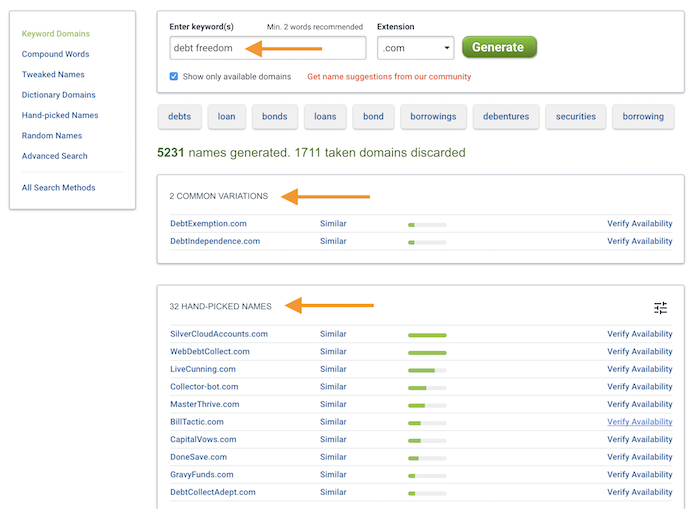
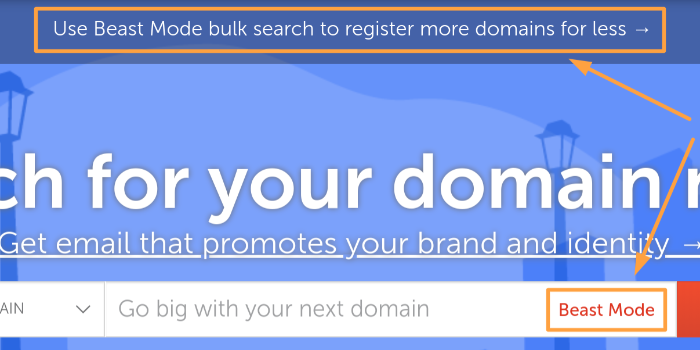
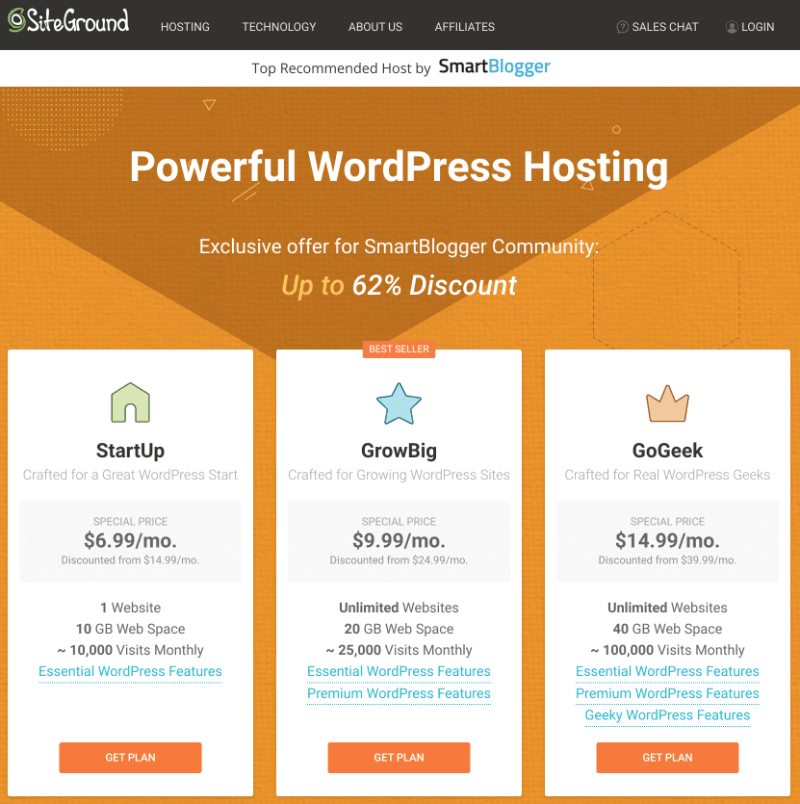
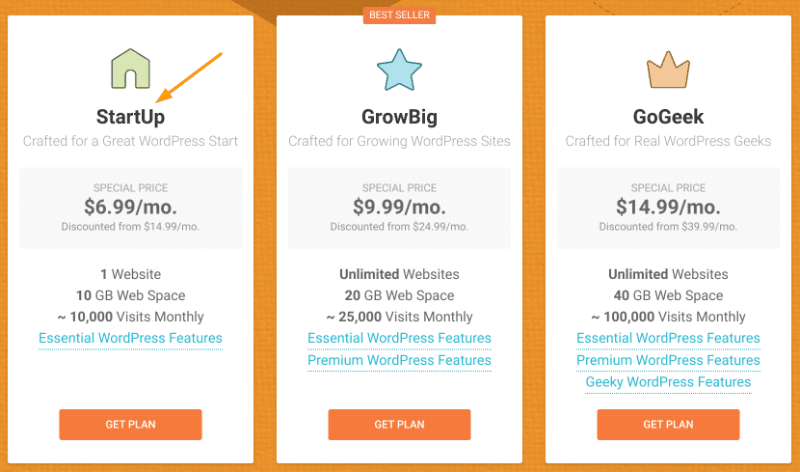
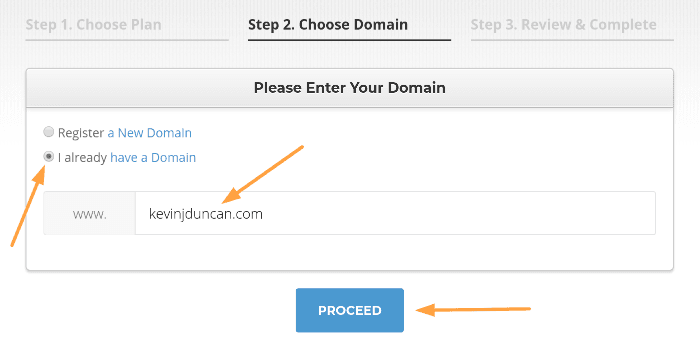
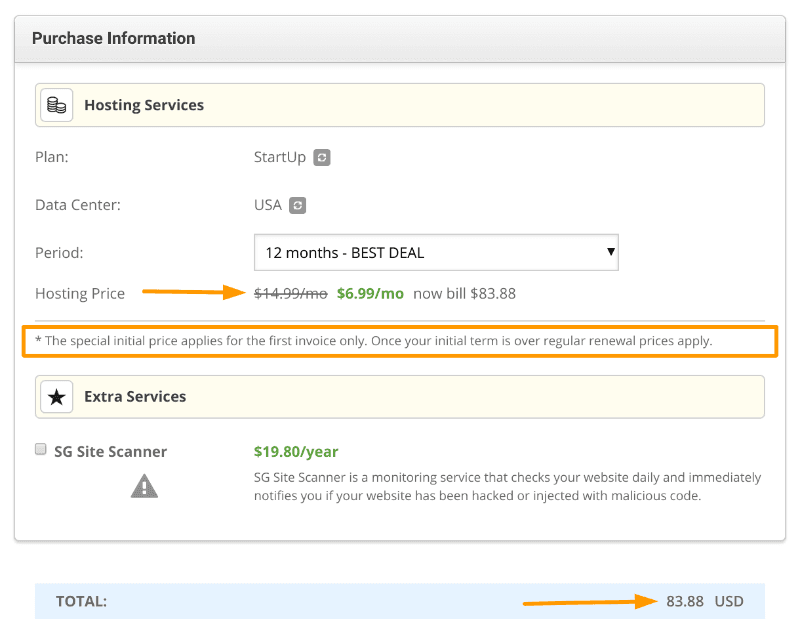

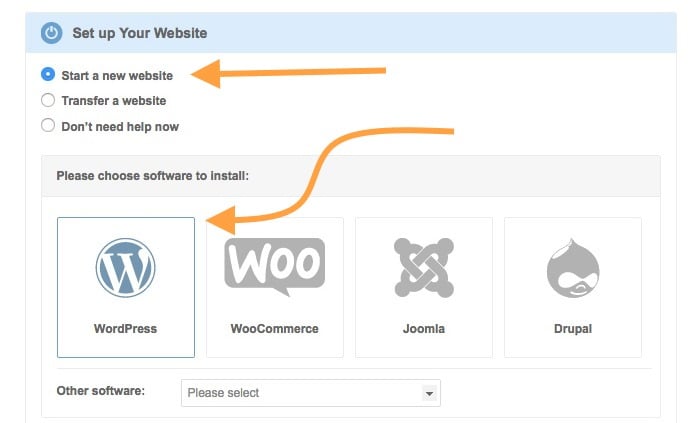
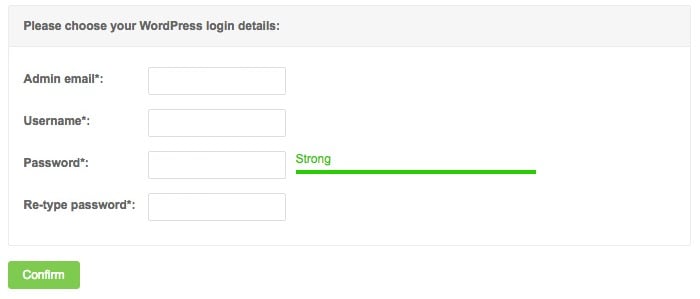
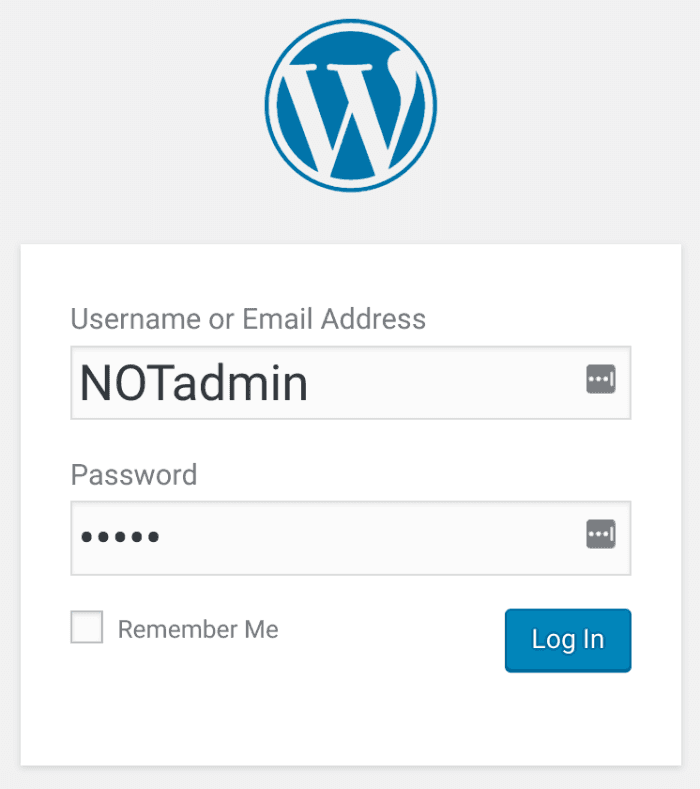
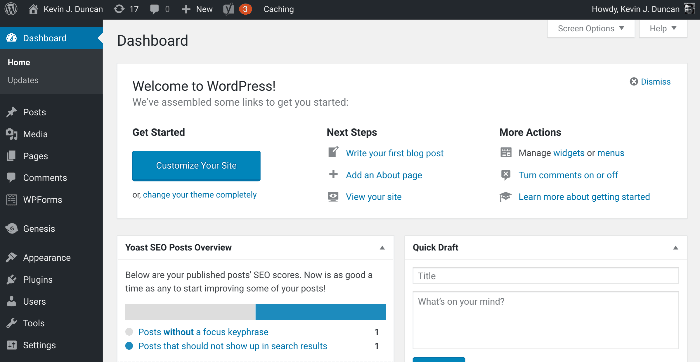



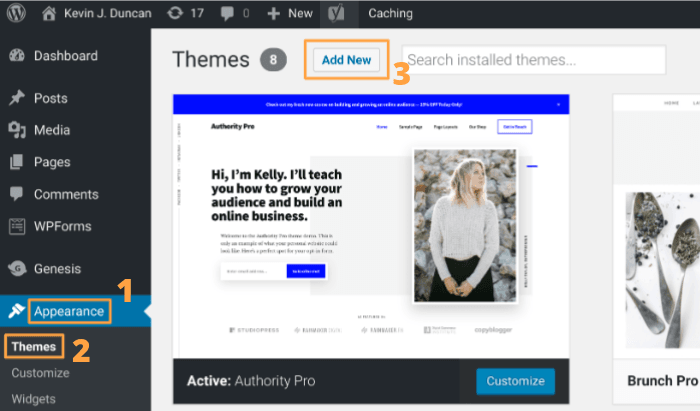
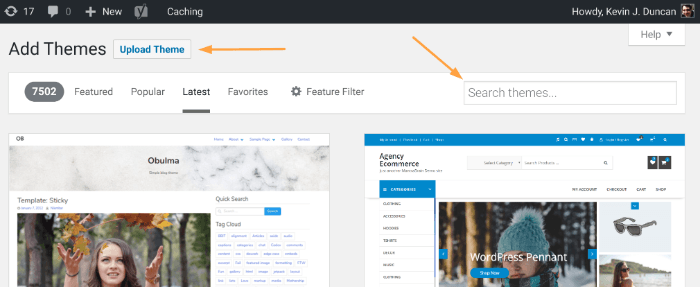
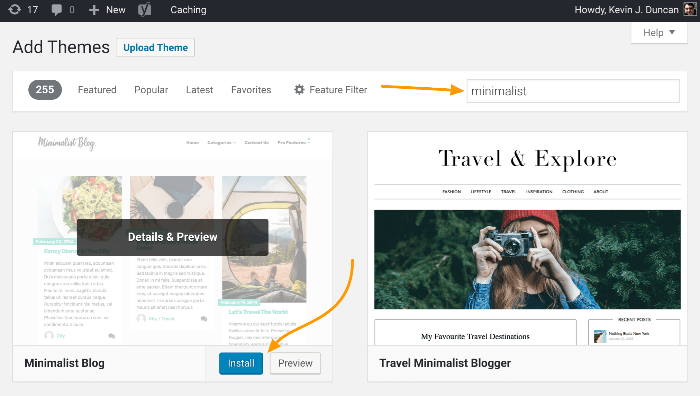
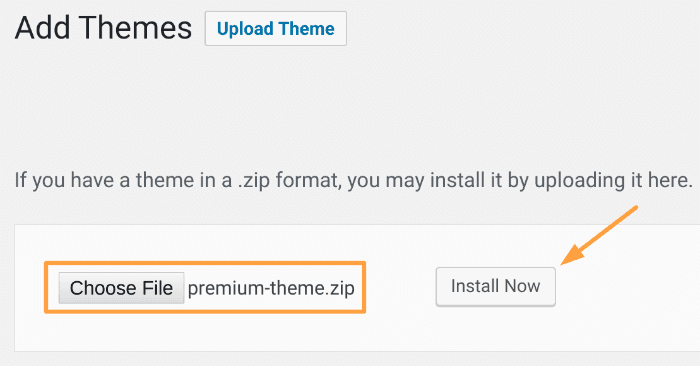
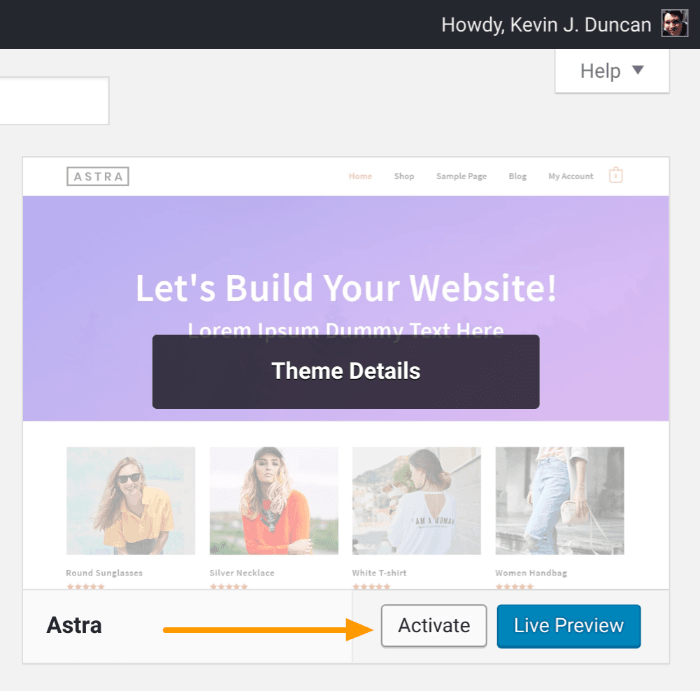
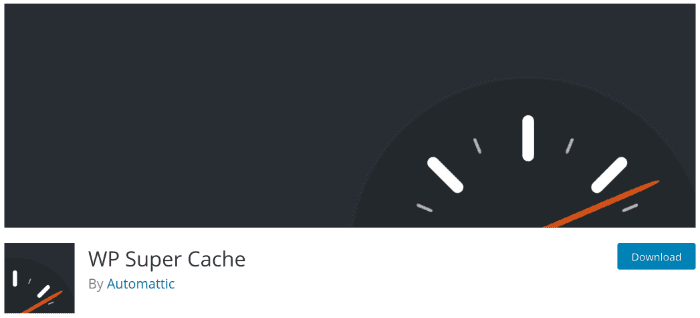
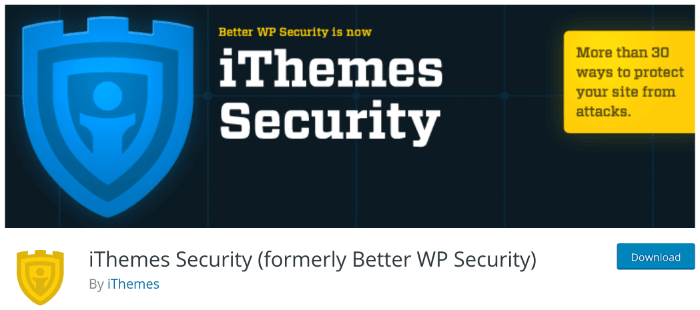
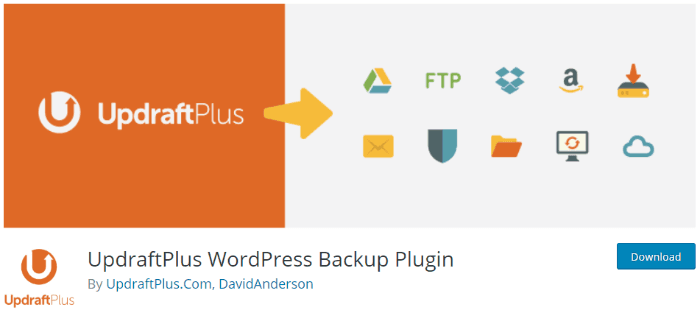
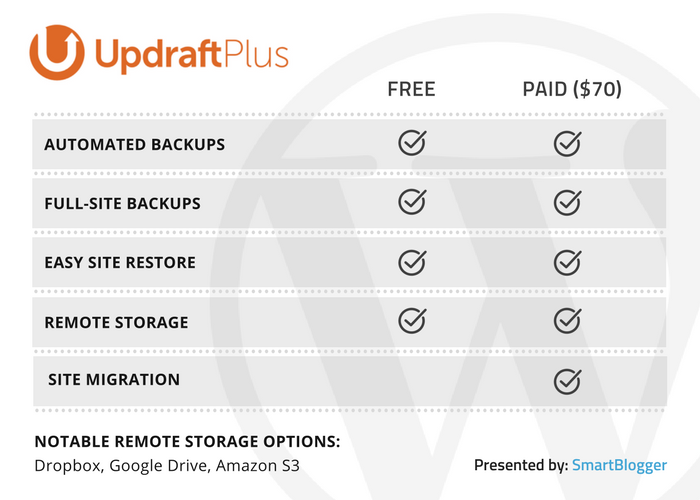

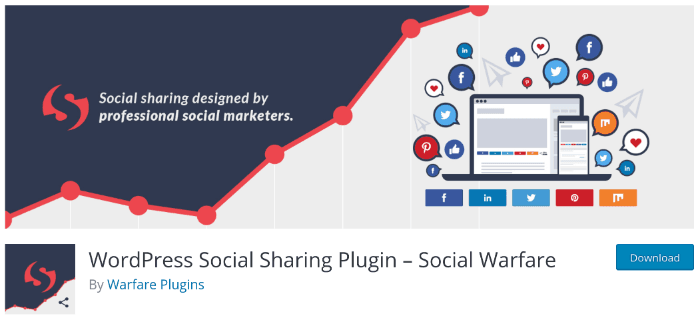
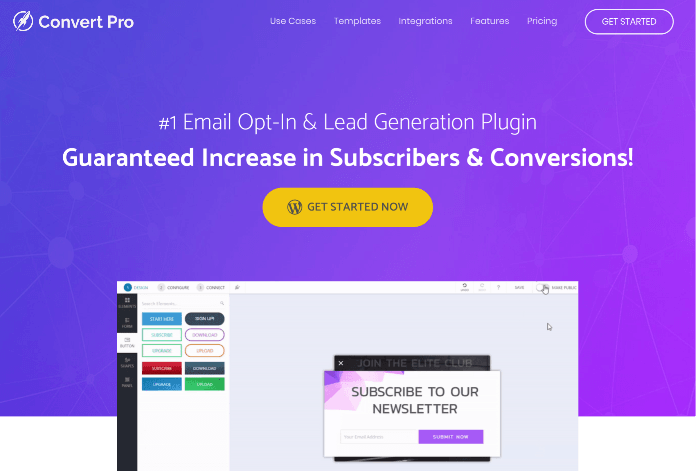
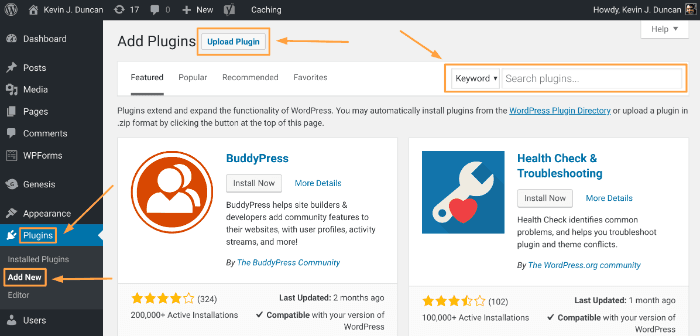
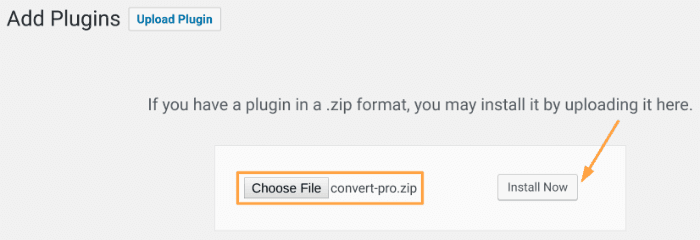
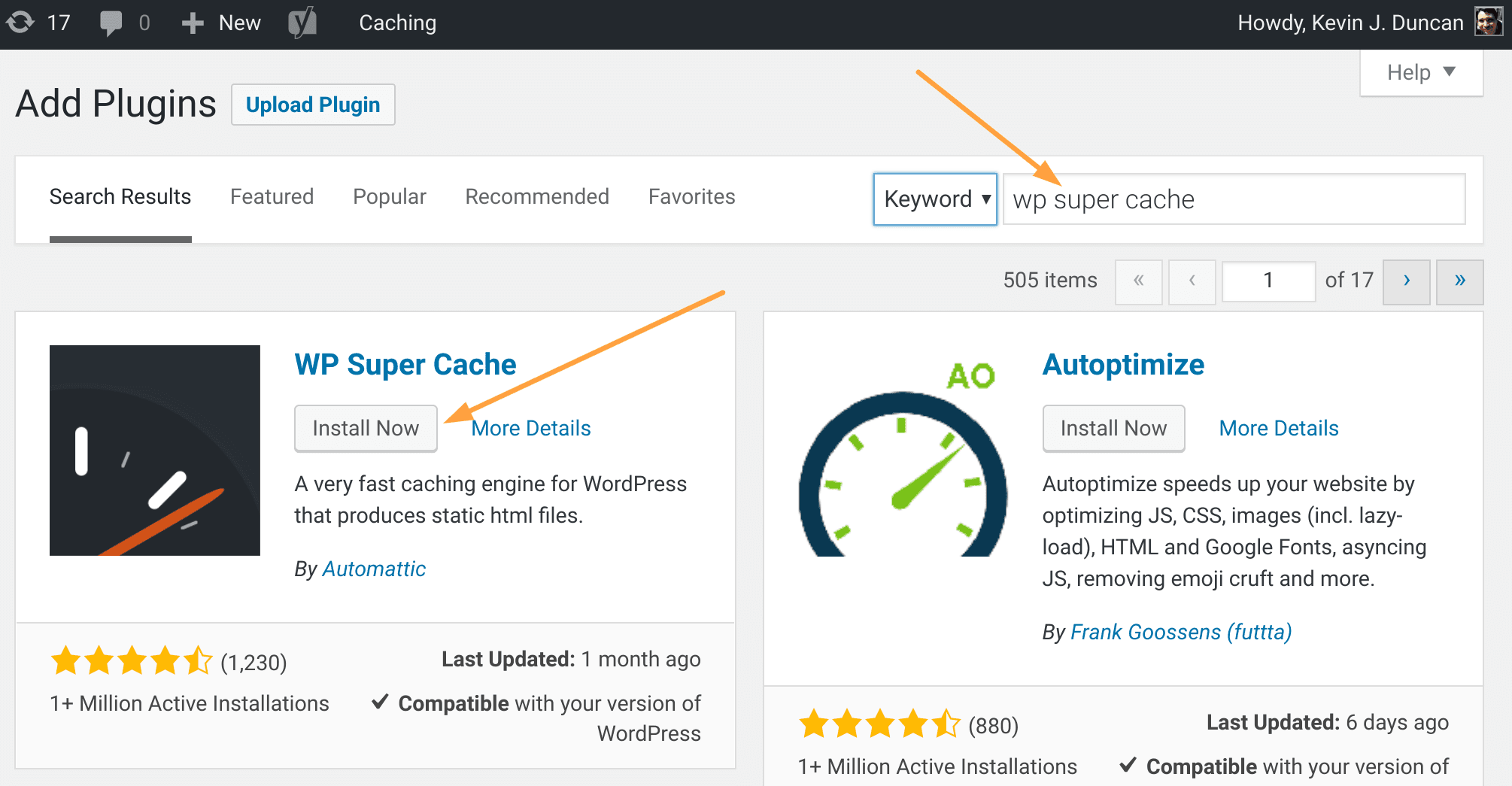
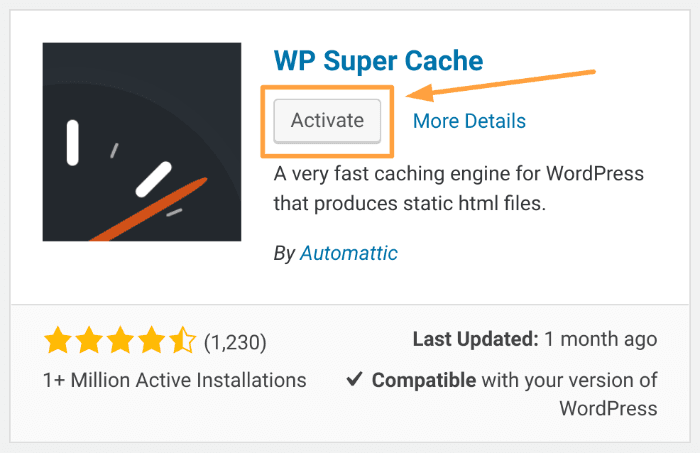
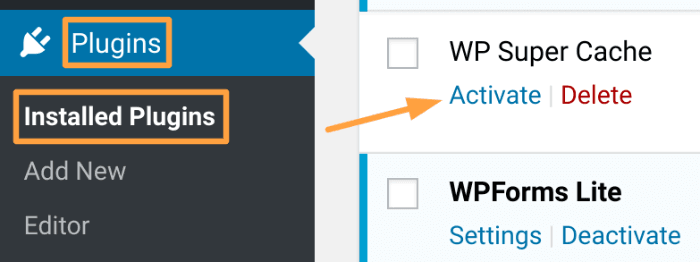
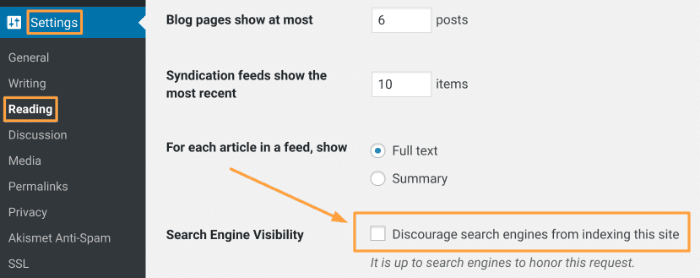
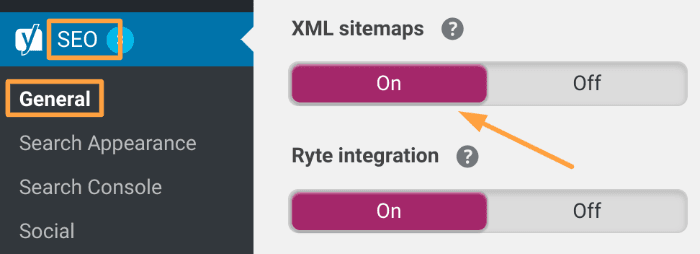

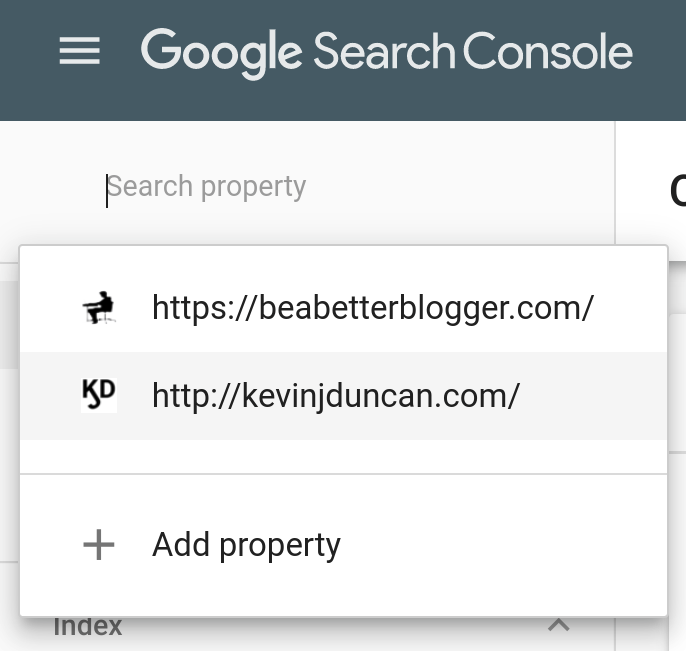

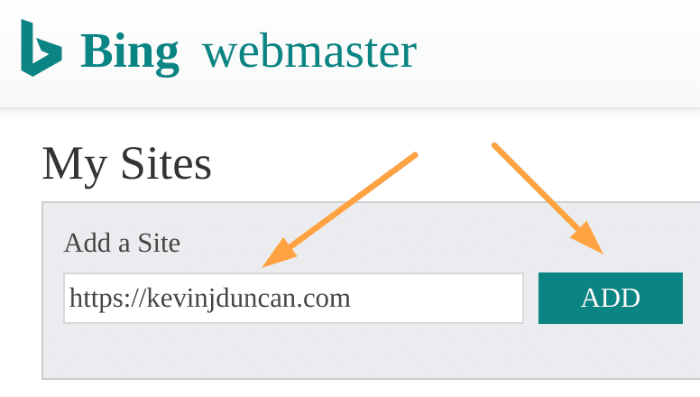
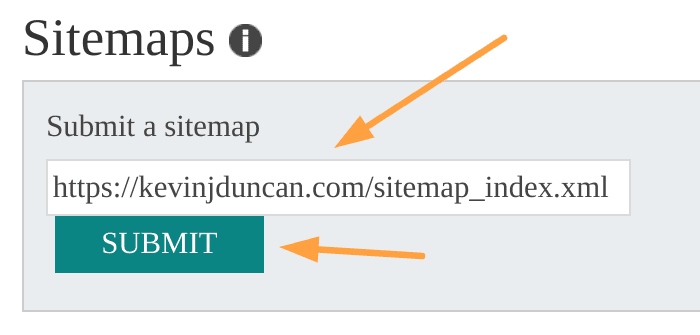
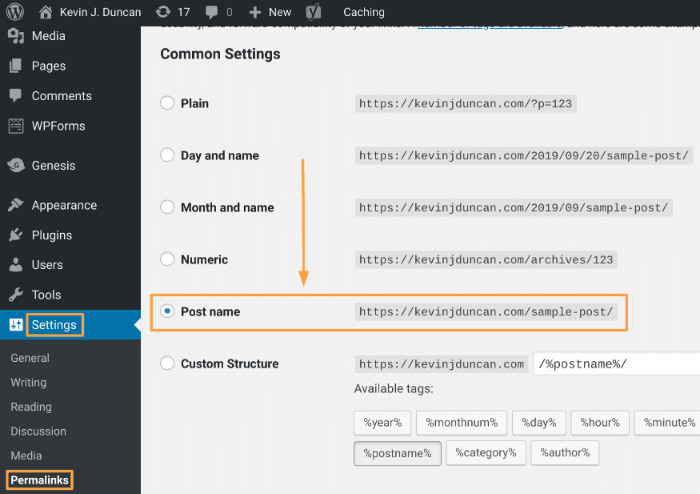

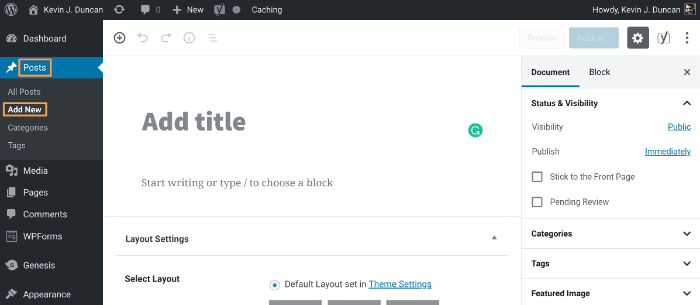
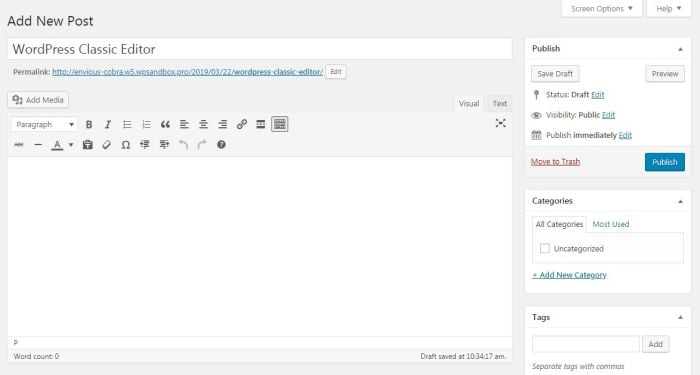
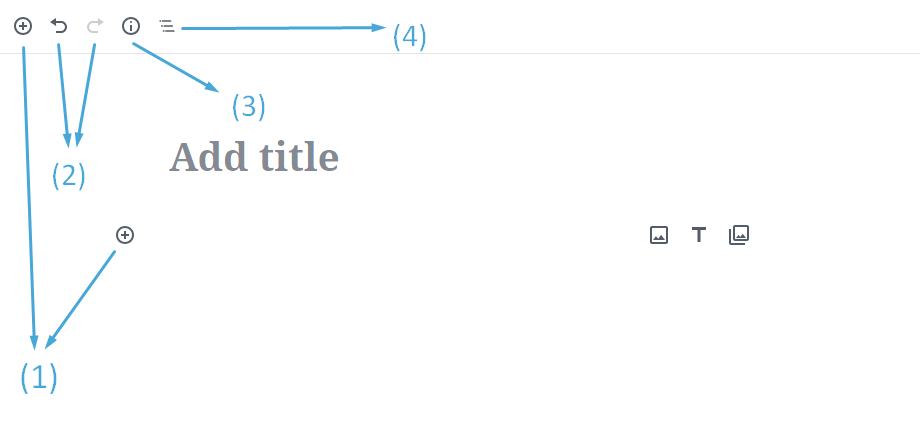
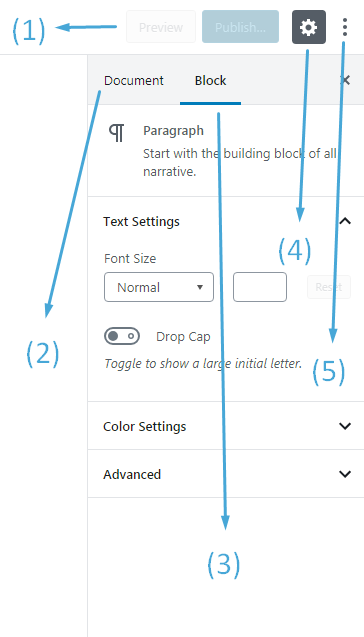
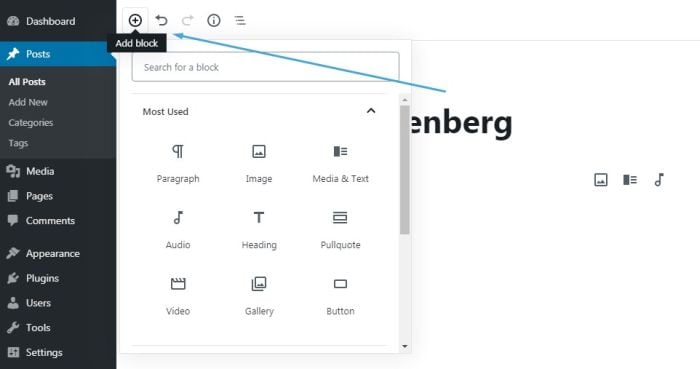
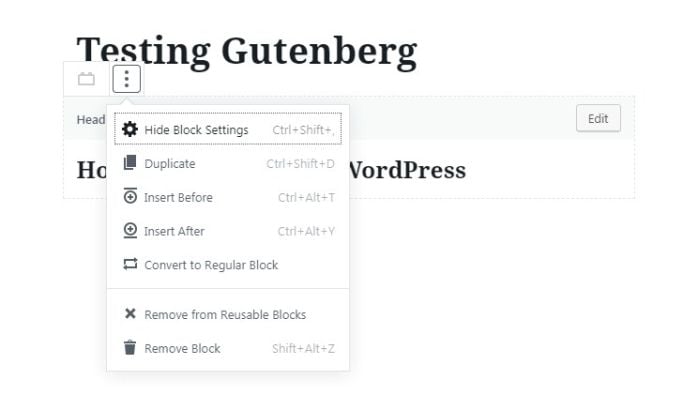

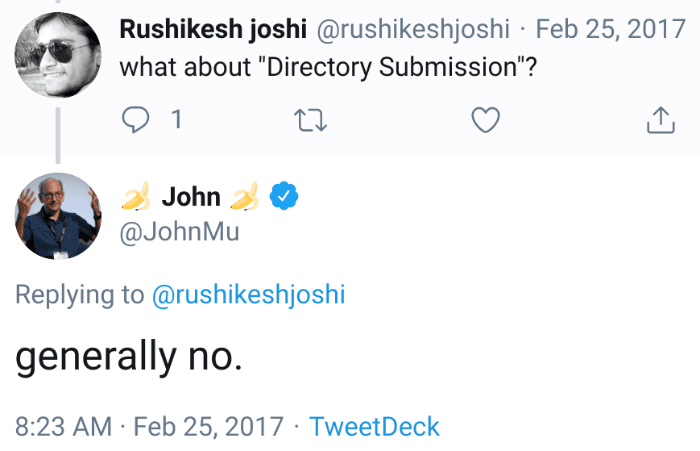

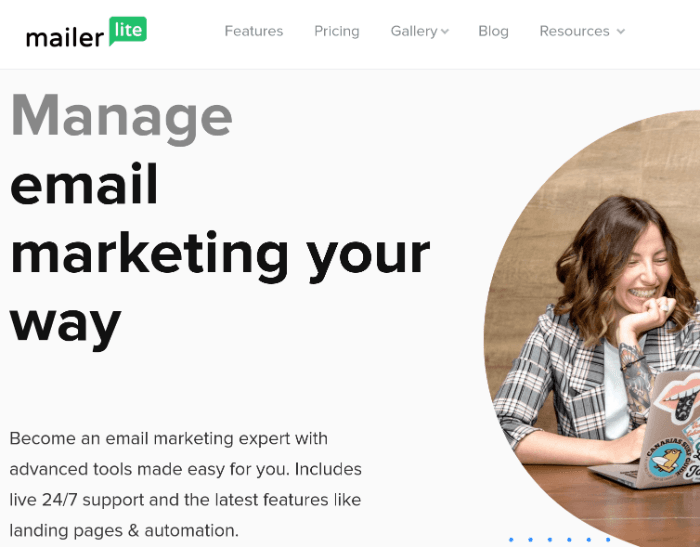
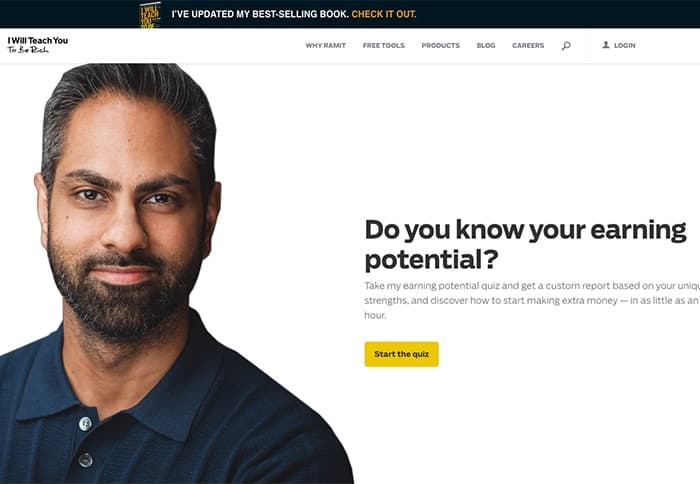
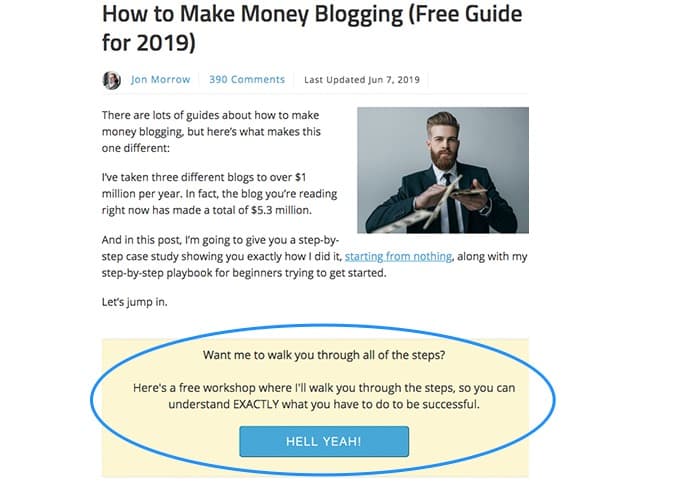
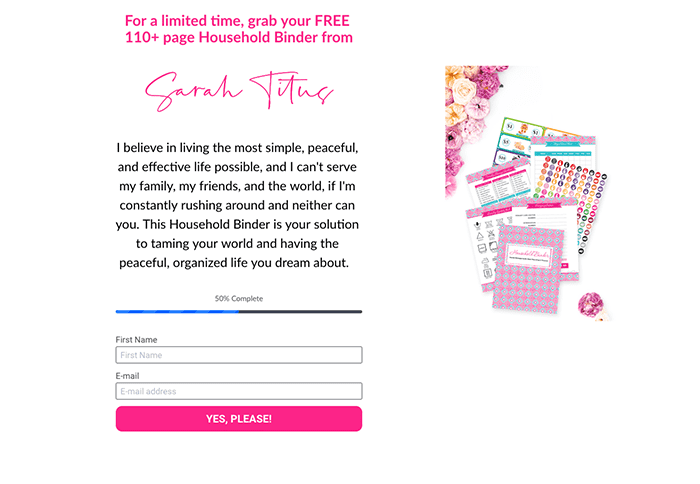
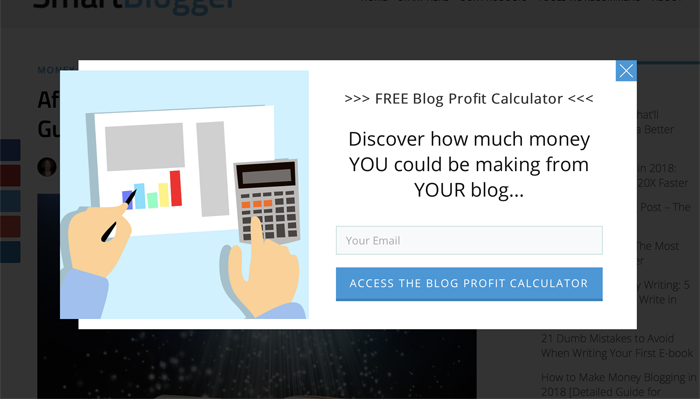
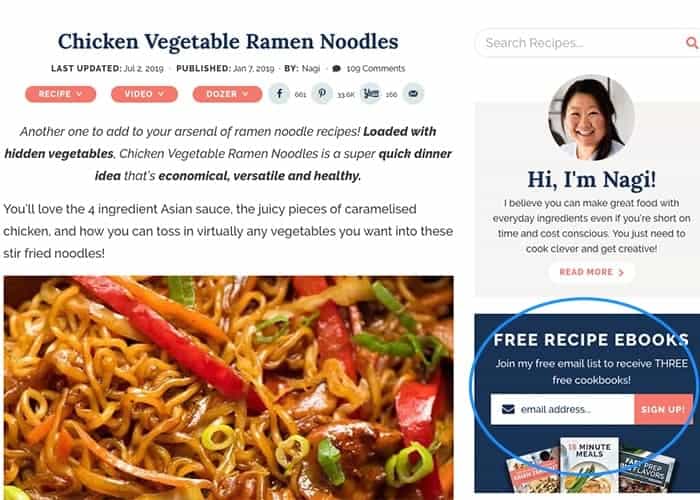
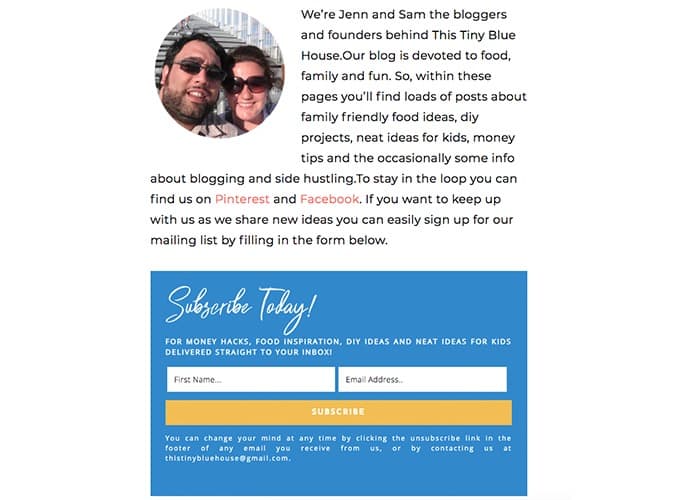


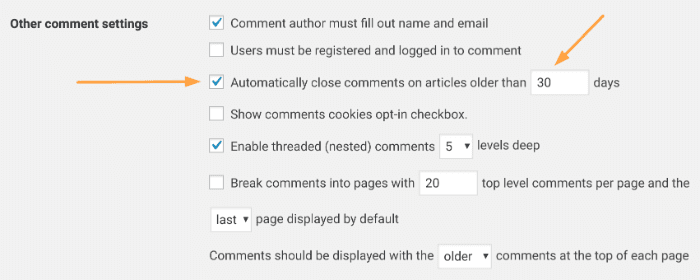
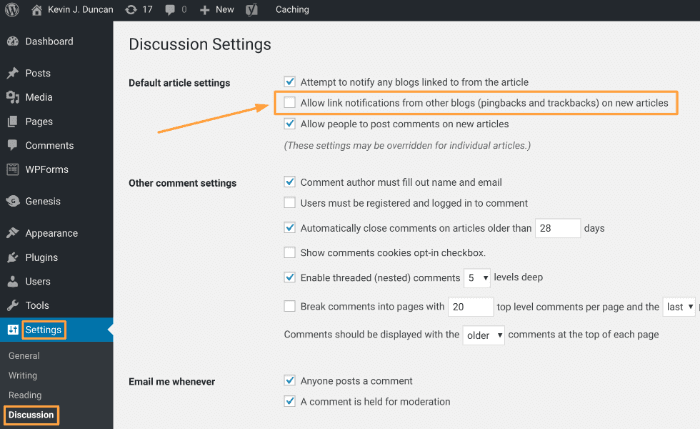




Hii John, I’m a big fan of your writing. I’m planning to jump into blogging. And, this post is really going to help me. Thanks a lot.
Most welcome. 🙂
Hey Jon, We are a web application development company and don’t have blog on website.
Is Blog mandatory for every website to get good number of visitors ?
Same with me.
How i wish i had seen this before I started my first blog in 2014… it could have been easier for me.
But all the same, cos some of the shared tips, I used them often and will add up the rest.
This money must be made in more fold.
Thanks so much Jon ( namesake) for the heads up.
Hi John,
this is awesome article. you have explained everything. thank you for this awesome information.
I hope it helps!
Hi Jon,
Great post as usual and I really like the idea of starting your blog on medium and you can also use the platforms like Quora where you can easily create content to share your thoughts and spread your ideas.
The biggest benefit of using platforms such as medium, Quora is that they already have huge audience who are reading and following content across all topics so if you have really good ideas and if you can create some extraordinary content around them then you can definitely attract more people to read your content and follow you on such platforms.
Once you get the idea of how to create content and how to attract more people to read your content then you can simply start your blog on WordPress also it’s important to figure out a blog sales funnel so that you can find different ways to make money from your blog even before the launch of it.
Most people especially the beginners never make even $100 from the blogs because of one reason they lack clarity and the lack vision. Once you get them right, you can increase your chances of making money from blogging.
The key to making money blogging is that you’ll have to learn from the pros, learn from top blogs that are already generating money so that you get better ideas on how to monetize your site and how to attract more people to read and share your blog.
Wow, really an insightful article! Thanks for all the tips. I already started my own hosted word press site and ain’t getting many visitors now. If i had discover this article earlier, i would have starts from medium first!
It’s never too late. If I were you, I would start tinkering with Medium now.
HI John the two Cashe plug ins you mentioned are not supported by wordpress it says. how can I get your help?
It’s supported by WordPress. If you are using a WordPress hosted site, go to the plugins area(after appearance), click on add new plugins and search for either “wp super cache” or “W3 Total Cache”
Jon, this is incredible. The way you present your ideas so clearly, such that the reader has no more questions to ask after reading, this is a skill I must learn. Thanks a lot for being so plain and generous.
That’s quite a compliment! Thank you.
My biggest problem (other than than my site being wiped out by malware) is I can’t identify my audience. What benefit is there to highly autobiographical art? And equally autobiographical writing.
That should be “autiobiographical abstract art”.
Anita, I follow quite a few Youtube channels and blogs by painters and artists and they demonstrate their knowledge and discuss their intuition as they go along.
If you really think through what Jon is suggesting and are willing to laser focus on what aspect of art, (like pastels or acrylic) with some keyword research, you can surely gather an audience around that and make the artist’s intuition and its development something people can learn to develop.
It really is just a matter of figuring out what people need and then figuring out how to make your solutions clear to them. Even the process of coming up with abstract art and developing this skill has some very concrete steps.
Once you have your core audience, you can wax messianic about all kinds of topics. And all the evidence in the world that artists are doing this wonderfully is all over the net.
That’s not a good topic. It fails several of the criteria above.
The writing I can change, the art I can’t. How do I link art to an audience?
First, define what you mean by art. Do you mean painting, writing, sculpture, dance, etc.?
The answer can’t be “All of the above.” You have to choose one, because the audience for each one is separate.
Next, think about the people who are already interested in that type of art. For instance, if you’re talking about painting, it’s hobbyist painters, interior designers, etc.
I paint with more intuition than design. I was given several unhelpful messages about art growing up and this is my way around them.
I’ve spent seven years working on my personal style so other than evolution my art can’t change.
Amazing writing and great information from you John… Keep it up.
Thanks Isaac.
Hello! This is amazing info that I’m sharing around. I love Medium and the way you use it is perfect. Great work as always, Jon.
Thanks Jewe!
You have a knack for combining hope and honesty, Jon.
I’ll start with my biggest take aways.
Focus on symptoms, not causes!
Consider the overlap of topics between popular blogs and Medium publications.
Would love to see a followup post on common problems for people blogging/ writing on Medium, ie.
criteria for becoming a contributor on an ideal, top publication, connecting with readers.
Thanks for everything you do for those of us striving to grow an online audience via blogging.
~Keri
Yep, those are good ideas. Thanks Keri.
Great ideas, Jon! I had not heard of Medium, but I’m on my way to try it out Thank you for giving us all so much. Sincerely, thank you.
Most welcome.
My audience is literally in your list of bad audiences (teenage boys trying to figure out what it means to be a man). I guess I need to go to my audience and see how THEY define the problem, not how I define it.
Thanks for the great ideas, as always!
Uh oh! I’m sure it’s a painful realization, but yep, you’ll make much better progress approaching it from their perspective.
Thanks for the updated method Jon! I’ve recently joined SBO and I’ve been considering posting on Medium alongside guest posting.
How would you suggest incorporating using Medium into the guest posting strategy?
I would start with Medium, and then switch over to guest posting once you start to have success.
I just found out about SBO and SBO with WordPress. Let me know which option you chose and how you like it? A new acquaintance of mine said he loves SBO because it blocks out all the noise.
Hi Jon, thank you so much for this very valuable post! I also am unfamiliar with Medium and your detailed instructions is very much appreciated. Looking forward to learning all the helpful tips you will be posting throughout the year.
Once again great post jon ,I have been confused from a long time about blogging and I am not getting any kind of idea ,your post help me a lot.
Comprehensive, insightful and honesty.
This post feels like a ton of lectures about blogging distilled into one brilliant summary.
Thanks Jon, for sharing, what I think are, the most important tips, tricks and tools of the trade.
I fall into the category of those looking to restart a blog. Lessons learned.
Thanks and all the best for 2018 to you and the audience Smartblogger.
Same with me,I also fall in the category of those looking forward to restart a blog.I wish i had known all these before starting a blog.
Most welcome, I hope it helps!
Hello! I’ve been blogging for 10 years now and am a colossal failure. It’s taken me years to come up to 600 followers and I’ve taken free advice from many people, paid advice from some others too but still haven’t figured things out…… Will try one last time to follow your steps one at a time and let you know if this works.
Wow 10 years! You’re absolutely right, you can’t give up now. I’m REALLY sure you learned a lot in those 10 years of blogging. Try to reflect and write down everything you’ve learned, what works and what doesn’t and it’s also important to narrow down your niche. 10 years is totally invaluable but maybe you were doing something that wasn’t hitting off. And if you’ve got a bit of cash, why not try signing up for blogging courses to help you a bit? I’m a former student from Jon’s SBO Class and I learn TONS. You’d learn everything from writing headlines to earning and building authority. I think you should go give it a try.
Shoutout to Jon hahaha He just shot down my idea of building a blog for depressed people. In fact, I email him and Marsha about this and they said the same thing to me lol. But great post Jon 🙂 Really lots to learn from you. I’ve started a mini “instablog” for now to “test the waters” and I still reap from what you taught me. Just glad he stopped nagging us to call him “His Royal Awesomeness” in 2018 😉
unstoppable.me ROCKS.
I am scared to invest money because I’ve already spent a great deal and got nothing in return. I now only want to do things that are doable and for free. ( sorry for sounding so cheap but that’s the truth)
Hi Haruna, I’m a half-newbie in Jon’s guestblogging course, so sort of in the same club 🙂 . Would you mind kindly sharing how Martha & Jon shot down your blog idea for depressed folks? 🙂 I was thinking of something similar, and, if I’m understanding Jon’s point, is it a bad topic because “depressed folks/people” is too general?
–So, would the solution be to “niche down and make it very specific” (e.g. divorced women aged 30-40 with 2 children who are grieving but not diagnosed with depression…or even more specific than that) .
Or was the depression blog idea completely destroyed by Martha & Jon? If so, what were the key reasons?
Thanks!
I understand that feeling. It took me three years to figure things out, and part of it was just learning which people to pay attention to and which people to ignore. Sadly, there are a lot of folks out there giving bad advice.
Thanks so now should I re-start on Medium focusing on just one topic? Mine is a personal blog where I talk about travel, food and lifestyle…. almost journalling but not quite. Also I am a senior citizen but not many older women in my country are online or net savvy…..any ideas on how I can target my audience?
Your problem might be that you haven’t properly defined your topic/audience. Your blog seems to be about a number of things, targeted to a lot of people. It’s hard to get a lot traffic doing that.
Thanks I will try and focus on a target audience. But I find many blogs like mine which are general and still have a large audience….
Wish I can read this advice a few years ago when I start to blogging for the first time 🙂
Best advice I ever read,
thank you, Jon
Thanks Try! I hope it helps.
Hi Jon,
Great article full of insightful information. It is no surprise that I subscribed to your newsletter.
When I saw this article in my inbox late last night, I decided to read it right away, and I’m glad I did.
Honestly, I started with Medium where just after 3 post on the platform, I was contacted by the editor of a publication to become a writer for his publication. I accepted and write a couple posts to him.
Then other publications accepted my articles and began publishing them.
Just 2 months ago I decided to launch my new WordPress blog. I haven’t started monetizing, but with the insight from this article, I need to start now.
Thanks for sharing Jon!
That sounds like a great start. Congrats!
Different question: Is it worth posting on medium when you already have a wordpress set up?
Yes, because your posts can get featured, and you get exposure.
Thanks. I have an account I just need to use it.
Great points! You explained blogging about as well as anyone that I have read thus far. Good stuff and Thanks!
Jon, being on your newsletter list consistently proves to be one of the smartest decisions my blogging butt ever made. Thanks again for your brilliance and generosity. You deliver with actionable, important and up-to-date information about this sometimes very frustrating world of blogging every single time. And having been your workshop student a couple times now, same goes for those, but like a million times over. Thanks.
That’s a great complement. Thank you!
Killer post man, thank you.
Of course! Glad you liked it.
In the post, you mentioned several topics that are doomed to failure as a blog. Two of them caught my attention – “women who are planning their wedding” and “guys struggling to understand masculinity.” I’m sure you’ve heard of “The Knot,” which gets over 12 million visitors a month (according to SimilarWeb). And later in the post, you casually mention The Art of Manliness, which get 9 million visitors a month. Those sound like pretty successful numbers. So what am I missing?
Yeah, good question. I’ve actually been wondering when someone would bring that up.
The Knot isn’t really a blog. They do have some content, but my guess is it’s driven far more by the collection of tools they offer, the photos, and so on.
The point: I’m not saying the audience can’t work. I’m saying it can’t work for blogging.
The Art of Manliness is a great example of the point I made about self identification. It targets men who take pride in being manly. It probably seems like an insignificant difference, but it’s not. His branding aligns with the perception men have of themselves.
Jon, this is enormously valuable, thank you. I’ve written every week for two years. This article encouraged me to revisit my hypothesis from a fresh perspective and ask myself some tough questions. Thank you so much.
Wonderful! I hope it’s been helpful to you, Peter.
Wow excellent write up! I appreciate your information on ‘spying on others’ and following that up with Medium first…not Wordpress. Totally realizing content marketing is the way to go these days, I have started writing my own blog articles for my business site. Guest blogging is the next step.
I have you all bookmarked and will be a frequent visitor as there is a plethora of great articles here…thanks!
Most welcome, Brad!
This was by far one of the best articles I have read about blogging. Ever. You didn’t simply give out-in-the-air advice that sounded good–you gave links and recommended sites (even free ones!) that are actually practical and helpful. Thank you for taking the time to share this – I have bookmarked this page and will be coming back to it often!
Most welcome! I hope it’s useful to you.
Starting a blog was one of the worst issues to me back in 2014 when I had no payment method to choose but Thanks to our local hosting provider that helped me give domain name & hosting.
Now I have started blogging and it’s been 3 years I’m doing it with great Passion.
Here’re a few tools that helped me in Blogging:
1. Payoneer (Best Online Payments Transfer Solution)
2. HosterPk (Local Hosting Provider in PK)
3. AspirePro – Genesis Framework
4. Yoast SEO (SEO Toolkit for WP)
5. UpdraftPlus (Backup Solution)
6. Online Mentors & resources like SmartBlogger etc.
BTW, Thanks a lot for the awesome guide.
On a daily basis, people rush in to create blog and rushed out due to lack of proper testing and analysis. Thanks for this wonderful post
To succeed in this line of work, one has to want to do this No money will be earned for quite a good while. If you love to write and build relationships online with people and companies, this is definitely it for you.
Great Post.
Perfect start to 2017 🙂
Really motivated me to do something big this year 😀
Excellent!
Hi Jon
I like your blog post. It’s very informative and interesting!
Just one question regarding to publish my post in Medium before become live is it considered a duplicate content when I do publish in my site?
The idea is to move your posts from Medium to WordPress. That way, there’s no concern about duplicate content. They only exist in one place.
What about those of us who already pay for hosting etc? Should we cancel those accounts?
This article is absolutely fantastic!
I’m thinking, why didn’t I find this article before I started my blog. If I did, I think, I could see a clean domain name. So, I felt happy and sad at the same time while reading this article.
Blog – Daglega (I found an Icelandic word as a domain name)
Niche – Social Media Marketing
I have already set up. What do you think about my domain name and niche sir.
Thanks anyway.
Hey Jon,
Really good and informative post on starting a blog. I enjoyed it.
It seems that the world is being digitalized in every way possible. I think we all should have a presence online anyhow.
However thanks for sharing the post.
-Liton
Thanks again Jon, always the best info from you. Your posts always get my attention.
Thanks, I have found my answer.
Hey Jon,
This is really nice to read this guide and i have started my blog. Thanks For sharing 🙂
My question is if i redirect 3 expired domain with
1. DA/PA 20/30
2. DA/PA 20/1
3. DA/PA 8/20
Wow. That’s a complete guide for sure. I’ve had my blog for years now, but I wish I’d seen this back when I started.
Me too, Richard. It would’ve saved me years, but I suppose some of us have to learn the hard way so the rest don’t have to. 🙂
Thanks so much for your straight up blogging know how talk!
Fantastic post!!
Best fit for this topic. It’s really helpful for everyone who want’s to start a blog. The way you describe this blog is really amazing. Once again you did a great job by sharing such a great post with us. Before reading your post I am not aware of the medium platform. But now I can easily use this to write band share some awesome blogs. Thanks for making and sharing such a great post with all of us. Keep sharing. I am waiting for your future posts.
Nice article, keep up the good work!
Thank you for such a detailed guide for starting a blog but here i am finding the best free theme for wordpress. Can you suggest it?
This was a great article!
Seem easy, but quite difficult. I have to bookmark this article and look back when needed. Great work, Jon.
Interesting! Seems interesting but i don’t see so many changes of 20X faster thing. 😐
That’s great, Many of things are amazing bloggers will get helped with this.
Great infographic with all the research data! Thanks for this guide!!
Hello, Jon!
Brilliant! Just brilliant!
This is indeed the new method I got to know of.
I am into the blogging since long and will definitely employ this new method to 20x my blogging ability.
Thanks for that, Jon! 🙂
~ Adeel
I’ve only just ‘found’ you Jon, and I’m so impressed already! I have a ‘how to fix it’ kind of blog and experience high churn because folks come, fix their stuff and then disappear. Hence I’m struggling to build a community as such. I get regular visits each day (around 1000) but they are new people each day.
So, thanks for the valuable insights above 🙂
Stay well Jon
Wow! What a great guide about starting a blog in 2018. Really the post is very informative. It will definitely help newbies.
Hi Jon,
I’m a big fan of the way you connect your audience with your content.
In this post, I’ve got some motivational messages, especially, from the last part where you’ve mentioned the time-frame to make $1000 and $100,000 per month.
Yes, it’s true that making money blogging takes some time, but once it starts making money, it can break your expected boundary.
Finally, thanks for letting us know the latest way to create a site.
Regards,
SMN Zaman
Jon,
Do you recommend starting all new blogs on Medium? I already have a few Wordpress websites under my belt and can set up a blog in 30 minutes. The only initial cost would be the domain as I can use my existing hosting until the site grows.
Are there any other benefits to Medium other than it being an easier entry point for beginners with Wordpress?
>If you were to ask a group of men, “How many of you have trouble understanding your masculinity?” no one would raise their hands.
Well, that’s not true. There are plenty of guys who are well aware they’re struggling to figure out what it means to “be a man”, and aren’t in some kind of denial about it. The idea that guys like this are just these of sniveling beta male “why do girls always ‘friendzone’ me?!” type of guys (who also apparently believe they’re the pinnacle of masculinity) is just wrong.
That’s not to say that there aren’t guys out there who believe they’re doing everything right (with women and in life in general) but just keep getting “friendzoned for literally no reason!!!” and if you want to target that audience, go for it.
Interesting, the fact is you have made things easy! I will follow from the next blog i create!
Very Informative article. This upgrades my some skills.
Thanks for Upgrading me.
Let’s create new blog that make good $$$$ in 2018.
After Reading This Page, I am really feeling myself very bad. If I can get this information 2 years back that will really be helped me because I am already wasted one year on Blogspot website. Anyway Thank You John, This is Really cool stuff for Beginners. I Will definitely Referer it to the people who want start their own blogs.
After looking at a handful of the blog articles on your blog, I honestly like your way of writing a blog. This site really has all the information and facts I needed concerning this subject and didn’t know who to ask. Your article has really peaked my interest.Thank you for providing these details.
A must guide for a newbie blogger.You have covered everything.
Thanks Jon Morrow..
Very lengthy post but the presentation is awesome. I loved the post.
Thanks:)
Hi John, it’s a nice post which gives better clarity and insghting for blogging platform and a successful blogger.
Thanks for sharing
Hello Jon,
Thanks for bringing a new perspective to it.
Of course, starting a blog is easier today than it used to be in the past. A lot of things they told me back in the days are now as simple as ABC to me.
Cheers.
Emenike
Hi Jon! Great post. I am also a starting blogger. Really want to learn from this. By the way, I am also trying another site like this one here below, as I also would like to start monetizing my blog or earn money online. What’s your opinion about it? Thanks. https://tinyurl.com/y9mq8emz
Dude, I don’t have words to thank you.
This is article is a live saver.
God bless you 🙂
Hi Jon,
Thanks, for valuable information regarding blogging and explaining it bit by bit with beautiful infographics it’s really helpful to me.
awesome blog, got all related and required information from this blog.
Hello, John,
I have interest in writing blog, but my vocabulary is weak, How I prepare?
Hi John
Considering the fact that I am just starting a new blog, your article landed up perfectly.
The internet is full of articles that do not go deep into the subject, which is why I love this.
Very inspiring, Jon! I have been following for a while and I’m doing exactly what you said here. It’s taking time but I’m doing it step by step.
One thing that I don’t understand is about exporting from Medium to WordPress. What’s the point? I mean, even if you do all the work for exporting the content (from the link you provided) to your WordPress site, you have to delete the Medium one.
What’s the difference between doing that and just writing a new blog post on your blog after deleting the Medium one? It’s exporting comments or what?
Hi Nicolas, medium is less likely crawl by google, Wordpress is great CMS, I am using for my own website. If you have published one article on medium you can publish it on your own but for this, you have to give one reference link to your published article on medium. These tactics stop duplicity
Hello John, thanks for finally opening my eyes, I wish I knew all this before my first blog. However, my question, is it possible to re-focus to another topic along the way, must I begin a new blog with a totally new niche?
Changing audiences usually means you have to start a new site.
Great post Jon. There are some really useful tips in here. Thanks!
This is such great information! I’ve been blogging since July 2017, and still struggling to crack traffic rates of over 50 visitors per day. It is very discouraging at time, but I won’t give up! I wish I had found your site sooner, but I plan to really dig in and use your tips!
Great article, Jon. Many people jump into blogging thinking that it’s easy. It’s extremely hard to capture an audience, and you explained the new way of blogging that will make this step easier. Thanks.
awesome article but this game is just getting harder
getting traffic …ranking your site…monetize it are difficult now and it might take longer time than expected to start having some results
Bad advice telling people that small shops is a waste of time. We had a small sewing center in Northern Wisconsin with a customer base that spread across a 50+ mile radius.
We had over 800 names in out customer data-base that we mailed a quarterly. But it was through our email and blog that we could contact regular costumers on a regular basis in ‘real time’.
We would video sewing tips on the blog which always stimulates, inspires, and improves sales. Not everybody is out to make so much money to run a business from the beaches of Cancun… some of us are just regular people makin’ a living the old fashion way.
Hey John,
I will give you 10/10 for your content writing. Really this blog is clearly understandable and quality content. However, after reading this blog, I got to know the differences in WordPress.
Thank you so much.
Wow!
Thank you very much.
I have been blogging for 8 months and earned a little traffic. Umm… Its around 500-600 visitors per day.
I made a few mistakes (i hope I would have found smartblogger before) and improvised. Mistakes do play a big part. I just make sure I don’t repeat the same mistake again (like starting a blog with lousy intro 😋).
This blog post is really a new motivation for me.
I’m planning for something new and interesting on my blog. I think I found a MEDIUM to test it before applying it.
Let’s see how well it plays.
I love your posts.
Keep Blogging 😊
Great post, Dear. I especially like how you highlighted and linked to all of your recommended resources. Very helpful. Extremely easy to scan for quick reference.
I especially appreciate the blogger outreach suggestions and link to Brian Dean’s article. I’ve been thinking that there must be a science to and skills to effective outreach. You’ve given me a plan and steps to become proficient. I can do this – priceless! Thanks for your generous sharing of what you’ve learned.
Thanks, Jon. It was worth reading for a second time. I set up my Wordpress site before Medium came along, and – as a complete novice – it took forever. But in a funny way, I’m glad I spent all those hours at weekends and long into the night working it all out. At least I now have a basic understanding of how the backend of a site works and I feel more in control. But, you are so right. . . If I’d spent those hours writing on Medium instead, I’m sure I’d be much further ahead of the game today. As ever, I continue to learn from you.
Cheers, Mel
Hi Jon, what a great idea to start folks off on Medium. You are so right about the learning curve with Wordpress. When I started years ago I did it on blogger and then moved to WP. What a nightmare! It was a lot of time and effort. Today I have a techie I use from time to time with my site issues.
But I do like Medium and have written a little one it, I wanted to do more this year with it. How is the $5 /mo membership working? I’ve been thinking about it to comment more there and read more as well. Thanks!
Great information Jon, thank you! I recently started a blog (six months ago), and wish I would have seen this article before starting. I am generating a little over 100 impressions a day, with very minimal clicks. The blog centers around the health and welfare of both dogs and cats. Any help would be appreciated!
I just like the helpful information you supply in your articles.I will bookmark your blog and take a look at again here regularly.I am somewhat certain I’ll be informed many new stuff proper right here! Best of luck for the following!
Thank you so much Jon. Wish I read your post sooner.
I knew about Medium but always thought using it is a waste of time. Now I know better.
I will be going back to the drawing board. I really need to fix my blog. With your step by step process mentioned in this post.
Thank you Jon!
Thanks, Harsh, really informative and useful piece of content and it clearly show how much efforts you have made to create this content.
Keep it up!
Can I earn some money by blogging on Medium by putting links to my site?
Or do they disprove or block that?
That’s a really good point, this Article is very helpful and informative. Thanks for sharing
Can’t wait to start my blog. Good Article …
John-
Just wow man. I started a blog in March 2018 and as many have already expressed here – wish I had seen this but better late then never.
I am starting a second project and yep, Medium first!
There’s so much fluff and misguided info out there that’s so far from what it actually takes to get one of these bad boys off the ground and get readers.
Anyway, thanks for bringing the heat.
CK
Absolutely man. Every time. 🙂
Hi Jon,
This is awesome! I learned a ton from this post!! My question though is can a blog in the Diabetes space work?
I have some experience in this area and have been trying to figure out the best way to tackle it. This post definitely has my wheels turning.
Thanks for the amazing content!!
Yep. Some health spaces are tough, but diabetes is so common, it can work.
Thank so much Jon
Thanks alot for such a great post, its really gonna help me as guidence as i m a new blogger and keep on looking for such helpful stuff.
Thank you
I am very thankful to you as your article has given me lots of ideas. I enjoyed a lot by reading this post. Thanks for sharing your blog. – dentist in springfield
Hi Jon! It’s an insightful post. I feel lucky to be stumbled upon this post. Thanks for sharing
Hi Jon, great content as always, but I beg to differ in one of your points.
Medium.
As a Medium writer myself, I don’t think it’s a platform for traditional blogging as we understand blogging. The usual tactics that most blogging gurus teach (yourself included) do not seem to work on Medium.
Take crafting headlines for example. The methods you teach for writing stellar headlines work for traditional blogging, but if you check Medium’s stats and headline trends, you’ll notice that traditional methods will not work.
Medium is a platform for story-tellers, and blogging isn’t always that. It can be, but for most average bloggers it isn’t. And I believe platform matters. You may get away with some how-to or X-number-of-ways posts on Medium, but for a lot of other, popular niche, this tactic will fall flat on Medium.
I could be wrong, of course, and if I am, I’d love to be corrected!
Cheers!
Hi Maliha, Thank you for sharing I think you are spot on.
Hi Jon,
What traffic source do you recommend for the spirituality niche?
Great information about “To start a blog”.
Truly appreciate the manner in which you composed.
I am truly going to apply this to the future.
Great work..!!”
Hi Jon,
This is very helpfull for us ! Ibecause i want to promote of my blog site… learned a ton from this post!! My question though is can a blog in the Diabetes space work?
This is the one of the most helpful tutorials. I really appreciate your work, please keep it up and help others in such a unique way.
Thanks
Hi Jon
Thank you for such a helpful post. It must have taken a long time to put together. It’s a great idea to use Medium to test out ideas. I’ve always struggled to get much traction on Medium. Guess I need to try harder or change my topics!
Hi jon, I am a new blogger, when I read your article, it feels different what I have gotten all this time, whether for beginner bloggers like me just make the latest articles, thank you Jon
Hi Jon. I’m new to your site but I am a student of Carol Tice. I have a Writer’s Website built on Wordpress (and the tech stuff is hard). My niches are activewear, gyms and skincare for my writer’s site. My question is would it be profitable to create a content marketing blog for these niches (or is that too broad). Also, since I already have something built on WP should I stay there or create a second site on Medium?
Great Post!
This is best article for newbies! Thanks for sharing the great knowledge!
how blogging help to rich poor people. how much time consume to get first earning on blogging field. i use it blogger but i dont get visitors so my earning is still hold. what to do please help
Very superb and informative blog , which are more helpful to learn about starting phase of a blog.
Thanks for this nice sharing
what is the best method to creating bundle of backlinks, what is your method and how do you make backlinks for single article, how much needed to rank article on top 10
Amazing strategy! Makes perfect sense and not all the other mambo jumbo.
Heads up! The images on “#2. Spy on Popular Blogs…” are missing.
Thought you’d like to know.
Peace & Love
Young El – Thanks for letting us know. Not sure what happened there, but they’re fixed!
Hi Jon, Thanks for the heads up on Medium.
I want to know if one can repurpose content from his WordPress blog to Medium without attracting Google penalties
Hey Jon, Thanks for this great content! I am bookmarking your for future reference. Thanks for these great tips.
I felt that this is a very informative article for people who are looking to start a blog. And I like the fact that you had given a brief explanation about why a mature business should start a blog.
Nice post.
Thank you for sharing a informative information with us.
Visit my links to find best Industrial Training Institute in India.
Hi Jon,
I just finished reading your article. Very helpful and informative. You’ve given me the bit of courage I needed to get started.
Thanks!
Hi Jon,
Great articles on starting a blog! I’ve been looking to do this for a long time as I am the one responsible to market my husband’s art. We already have a website
(Wordpress) so do you still recommend starting with Medium if we determine we have a viable blog subject? I have no experience with website right now but need to learn to do so…rank beginner.
Thanks for your time!
Cynthia
Jon,
I heard that the changes to the Google algorithm bloggers to lose over 70% if their traffic over the last week. Did that happen to you?
Great articles on starting a blog! I’ve been looking to do this for a long time as I am the one responsible to market my husband’s art. We already have a website
(WordPress) so do you still recommend starting with Medium if we determine we have a viable blog subject? I have no experience with website right now but need to learn to do so…rank beginner.
Thanks for your time!
Mathew Hayden
Hi Jon,
I am a new blogger and very most interested to become successful blogger. Here I got lots of valuable information and you blogging guide always help me learn new thing’s. Thanks
Hi Jon,
I enjoyed the post greatly. I’ve found mixed information on the viability of book review blogs. Do you think they have much chance of being profitable? Maybe it would depend on the genre.
Thanks,
Tim
Awesome article, thank you. I am a budding health coach and would like to start a blog around health, fitness and weight loss for women over 50. I visited alltop.com but couldn’t find relevant categories. All I got was three blogs in the health category and five or six in fitness, none catering to my audience. Also, I didn’t see the search box that is clearly visible in the included image. Have they updated the site? Am I missing something?
I would like to know your opinion about launching and boosting Blog’s Facebook Fanpage at the same time when starting the Blog itself. Would it give me kind of double impact? Should I do some elementary SEO and can Facebook Page be helpful for that?
Great article with very useful information!
Once you get to the stage where you are confident in your topic and content, must you migrate your posts from Medium or can you just upload them from scratch onto your self hosted blog? For what reason is migrating them beneficial?
Hi John,
Thanks for the article. The article and comments are very informative. This is a good read for those who aspire to be a blogger someday. Maybe I should start my own blog too.
Bookmarked! Thank you
Starting a blog looks like it is an overwhelming step to take
It is not, it is the mindset that turns it into a complicated tasks
If you have the will to succeed, you will be able to overcome all the challenges that you can endure
GREAT blog! Just wanted to mention this stat will soon be outdated – if not already is:
“Content marketing, which includes blogging, is now a $300 billion industry.”
Per a Technavio study, content marketing is projected to be worth $412.88 billion as soon as 2021. More explained here:
https://www.thedrum.com/news/2017/11/06/content-marketing-industry-be-worth-412bn-2021-following-four-year-growth-spurt
Jon, I don’t know how you do it! Another outstanding, comprehensive virtual encyclopedia on blogging in 2019. The resources, detailed instructions, and wisdom you provide are priceless. And you literally give it away for free. No wonder you’ve built an audience of three million!
Your critical thinking, data-based marketing savvy, and remarkably excellent writing do not go unnoticed. I appreciate your generosity SO much. You deserve all of the gratitude and kudos you get.
Hello Jon. Thanks for this useful post. Are there any good free opt-in forms to use? (because ConvertPro is not free).
This is really an amazing article to get a clear idea before starting a blog. I am a frequent reader of smartblogger, and I always get motivated to do better.
Hey Jon,
You have selected most frequent asked questions by readers as well newbie. Domain name for your business is crucial to give start because several points lay on it.
This time I got a content which is very genuine on this topic because you have pointed every thing very clearly in simple manner.
Thanks for exploring all the significant keys with us and it really going to help many beginners.
With best regards,
Amar Kumar
Hey Jon,
Glad to see your post. This is so far the comprehensive post with all essential resources on ‘How to Blog in 2019’. Thanks you so mush for the awesome share. And yes I will be following this in 2020 and look forward to my association with SmartBlogger.
Thanks & Regards,
Rajat C
as per speed concern for only blogging, can I use google blogger instead of Wordpress?. blogger server is 100% uptime as well as no speed issue. please suggest me.
Wow! I think this is all I have to learn, I’ve been searching for complete guidance and thanks to you for sharing such an informative article great post I’ve enjoyed your post.
On point! find a good blog topic on hobbies and passion and life experiences.
Wow! This post was so informative! I am just starting out and I just finished reading “Six Figure Blogging Secrets” and your blog post beats that book by A LONG SHOT! I think I’m going to take my very first step and pick a domain name and hosting website ASAP. You’re post inspired me so much that I can’t wait to get started ! I do have a question tho? How do you pick your topics? Because I believe that I have a good idea on what I want to talk about but im not entirely sure yet. The “Six Figure Blogging Secrets” had some suggestions but I’m not too sure on what niche I should go into. Any suggestions? You’re opinion would mean the world! Again thank you for this great piece of informative content you gave us I’m going to take action and start IMMEDIATELY!
This article is amazing, and I have shared it with a friend who is just as stumped as I was when I started 5 months ago. The wealth of info has overwhelmed her. Thank you again, I am so sad that I cannot afford your masterclass. My blog will be there to aid in my new online pewter embossing course and there is not much out there on the subject that I could find. I am busy redoing my website again as I have done a lot wrong. Sumo only works on a .org Wordpress site, is there anyone else who has a free plugin that you would recommend?
Wow, What a helpful guide, I appreciated the post incredibly. I’ve discovered blended data on the suitability of book survey web journals. Do you think they have a lot of possibility of being gainful? Possibly it would rely upon the class.
Please share more detail about how to find low competition keywords.
Thanks
Hi Jon,
I was told by a friend to reach your blog and I must thank him because your blogs are so huge and full of information. All the questions pop up in mind are already answered here. These are great techniques to start writing a blog. Thanks for your valuable tips.
Hi Jon,
This article is a grand tutorial, and although I have been blogging longer than now, I just learned a new trick which I can also use when creating content for my blog and clients. The idea of evaluating a chosen topic across social media, including Amazon to know whether the topic already has an audience, is out of the box. I’m impressed.
Hi Jon. From a student from the CMC, I’ll say this mammoth post is a great example of how even a huge post can be perfectly organized with Text, screenshots, tweet boxes. Thanks Jon and Kevin.
Thank you very much, Arijoy. 🙂
Hello John and Kevin,
That’s great content for a newbie to start their own blog. Also, the post is well optimized. The Best thing about the content is that it explains the things in correct order. I am going to share this content with my friends who are interested in starting a new blog.
With best wishes,
Arumugam Rangasamy
Awesome post that will become the world reference for blogging I’m sure.
What is your take on how to acquire a list suitable for a product (because I already have one) and how to promote the product to the list versus creating a product for a list which is mentioned here as your preference.
Thanks guys.
This is very in-depth explained article to create a blog. This will help any newbie blogger to create a blog instantly. Thanks a lot for sharing your great efforts.
I think the only thing you left out of this article was the kitchen sink. Great post!
Many thanks for the detailed tips – much appreciated.
Hey john and Kevin You guys Boomed!!!!
What a Great Explanation specially for Newbie like me , It was More then worth reading ,thank you so much and hands off to your that Effort you are putting to sharing this.
Find the best details about how to start the blog .. get information share with us.
Thank you So much, Author
This is some brilliant advice. I seriously wish I’d had this wee guide when I first started blogging. Spent most of the time struggling to do it myself instead of asking for help as well, which I am sure didn’t help – haha.
That’s really a great article for the newbie’s out there. I am just amazed by the blog insight. It will surely help me in creating my own blog. Thank you Jon & Kevin for sharing this article with us!!
Please do mention some good free hosting for beginners. Most beginners may not be able to have a paid hosting for their blog.
Hi Jon, I have a business website and I want to take your advice about it. I have around 1500 pageviews a day, Is it the right time to add google adsense as a way of advertising or not yet?
thank you for help
I read it to the end. this is the first time I have read such a comprehensive article. very valuable sharing. Thank you.
Deep content! I started a blog without following such a nice guide. After reading this guide I went back and addressed a few things. Thanks for all the great info.
Dear Jon,
The first thing, i really want so say thank you a lot or all the thing you give to this world.
I started with smartblogger for months and learn huge ton of useful knowledge about blogging.
also recommend my friend to read or blog.
Here my question :
i working on my blog about solar power, share the knowledge about technology, how to design and installation… but it’s seem like choose the wrong niches when i read your post, not so much people enjoy this niches
so what is the true important to let it go or keep going with this blog, i build this blog for a year so much of effort to this one….
And now i worry about building a failure blog,
Thank you and your smartblogger team.
Perfectly crafted to-do list for newbie bloggers… thanks for sharing it.
Hi Jon,
Thanks for this informative post. I want to start a new blog on cyber security and after reading this post my mind having a point of view to design and organize the content for the blog.
Hi SmartBlogger Team,
A very helpful article on how to start a blog especially for new bloggers like me.
It is very easy to get in mind.
Thank you for sharing this kind of useful information for free.
Regards,
Jay Panchani
Thanks a lot for writing this. Great article. I’ve just come across smartblogger and like the site already! will be reading all your other stuff in the upcoming weeks.
Very helpful article for newbies and to start a passive income.
Thanks for sharing it.
Hi Jon
I have been on your email list for years now, I read every email but always move on, never delete it though … in case I need the info one day !! , well today is one day !! I came over to try to find which theme to use, I keep changing it and can’t decide which is best, going to give Astro a go and see how it turns out. Thanks for the info over the years 🙂
Thanks for sharing great information on how to start a new blog. I will definitely try your methods in my Blog.
Outstanding blog. The information you have shared is really good and helpful.
But there is one issue which I am facing while selecting and writing blog and that is my blog not getting index by google.
Can you please share some good blog posting sites on which my blogs will get indexed soon.
Jon what do you think about the idea of leading people to your blog and getting them to subscribe to a free offer – then sell them on a product, VS leading people to your blog and getting them to subscribe to the blog itself – to monetize via Adsense, affiliate programs, etc?
I think the process for starting a blog remains same for 2018, 2019, 2020 and even next year. Thanks for sharing this.
Outstanding post, thanks for the hard work! These are great steps to get started, although I’m not familiar with SiteGround. been with WordPress for many years, and grown rather addicted to the use of plugins.
Hi Jon,
Great article full of insightful information. It is no surprise that I subscribed to your newsletter.
When I saw this article in my inbox late last night, I decided to read it right away, and I’m glad I did.
Honestly, I started with Medium where just after 3 post on the platform, I was contacted by the editor of a publication to become a writer for his publication. I accepted and write a couple posts to him.
Then other publications accepted my articles and began publishing them.
Just 2 months ago I decided to launch my new WordPress blog. I haven’t started monetizing, but with the insight from this article, I need to start now.
Thanks for sharing Jon!
I have installed wordpress but I couldnt find to change theme , some blank page appears . What I need to do ?
Wow. So much information here! Do you mind sharing what is the BEST Wordpress theme and what are the must-have plugins for a new website?
Thanks so much in advance!
Hi Jon,
This is a great post! Thanks for that! I hope it’s okay to ask this since I’m sure it’s covered in your courses…I am thinking of doing a personal finance blog targeting 18-25 year olds. As you know, there are tonnes of personal finance blogs and quite a few focusing on Millennials, though mostly on the middle or older end of that generation. In terms of validating the market, would you say that the number of personal finance blogs targeting older Millennials, in general, is proof enough that there might be a market for 18-25 year olds? Or is the lack of blogs targeting that age group specifically evidence that the market isn’t viable? Thanks Jon!
Blogging combined with affiliate marketing is truly the way to financial freedom. But it has to be something that a person wants because this line of work has no guarantees of financial security. What you put into it as an aspiring blogger is what you get out of it. And you must think long term because getting rich overnight online is null and void. Who agrees with me? 🙂
I took inspiration from this guide and just started my first blog. Thanks for the great tips and game plan.
Same with me.
How i wish i had seen this before I started my first blog in 2014… it could have been easier for me.
But all the same, cos some of the shared tips, I used them often and will add up the rest.
This money must be made in more fold.
Thanks so much Jon ( namesake) for the heads up.
I’ve seen so many blogging guides from the popular bloggers and I must say it’s the best of them all.
John you are a legend and I am truly inspired.
This was the best article I’ve read about Blogging. It covered almost all things.
Thank you for sharing it.
Hi Jon,
Such a significant instructive blog!! I started my blog a while ago but I didn’t understand much about WordPress but now thanks to this information I know more. These steps are really helpful, thanks for sharing this article!
Cheers!
You really did a great job to share this post and share the basic thing deeply with right details.
I completely agree with you, Most people think on-page SEO is just placing keywords on a page, There are many things to consider in ON-PAGE SEO, I like those you shared in shortlist but wish to see more points.
Yes, getting sucess in blogging require lots of hardwork, consistency and patience. All the points you mentioned above are very important and following them properly we can easily achieve success. There’s an ongoing argument nowadays whether web directories are still relevant or not. Some people strongly believe that it’s already a thing in the past or a “dead” strategy. Though, you have shared useful insights here that somehow debunks that theory about web directories. Indeed, it can help in building quality backlinks and I can’t wait to try these sites you’ve mentioned. I hope others will find this post useful just like I did. Thanks for posting, Jon.
I have started my blog and these tips will definitely help me a lot. Thanks
This is the best post for Bloggers. Almost all items were hidden.
Thank you very much for sharing it. 🙂
I have started my blog recently and I am going to incorporate some of the tips you have mentioned. Thank you.
Hi, Jon!
Thanks for sharing the detailed steps and the effort put into it. I found this to be extremely informative and helpful, thank you.
You probably won’t recognise my name, but I’ve tweeted you a couple times 🙂 anyway, I just wanted to ask, what is a logo? I’ve never heard of that before. I seem to be having some issues with my domain name registering, but once its sorted, (fingers crossed it will be.) I’ll be moving on to personalising my blog. how do you pick a theme? There seems to be thousands of them! As someone who doesn’t have a clue or anyone to ask, I feel like i need to be walkeeen at this for 2 days and I’ve still not got my blog! Please help!d through by baby steps! I’ve already been derailed twice, please help! haha
Blogging is certainly not an easy task to achieve and maintain in the infancy of a side hustle online career. The beauty of blogging as a digital nomad side hustle millionaire in the making is your thoughts that others consider as weird may turn out to be the avenue for you to earn passive income in longevity. Agree? 🙂
This is the first time I am reading your article. For anyone who is just planning to start his blogging journey, this article can be a full guide. I am bookmarking your blog to improve my knowledge of blogging.
Great content sir. Keep motivating the newbies with this kind of article. Thank you sir.
Hello,
Thank you so much for sharing this very informative article. This will help me and many others also. thanks a lot.
Hi Jon,
This is one of the longest article I’ve read! This post will definitely help beginners to get started…
Thanks for sharing!
Wow. This is a very detailed article and I am going to use as many of these tips as I can. I am a new blogger and I need all the help I can get. Thanks for this information.
quite lengthy but informative soon gonna use these tricks on my own blog
After 10 years of working on my blog and making it successful, Now I am planing to start a business with multiple blogs. Do you think it is a good idea? Let me know. Thanks!